#John Pizer
Text
#jack the ripper#whitechapel murders#circa 1888#ripper poll#victorian#victorian history#ripperology#true crime#true crime meme#stupid ripper theories#ripper suspects
3 notes
·
View notes
Text
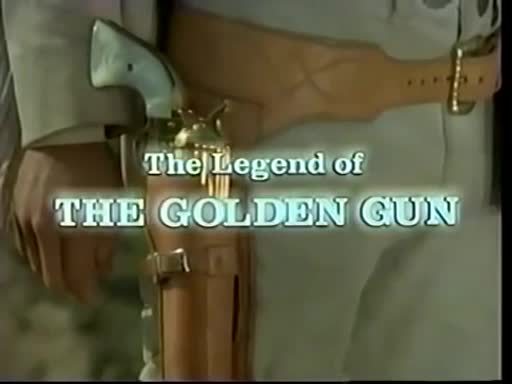
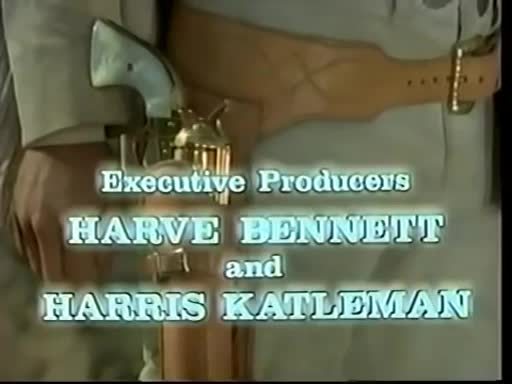


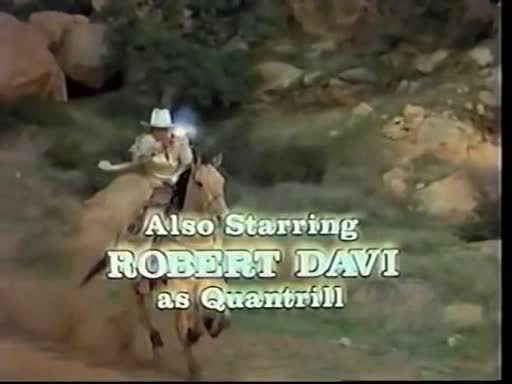

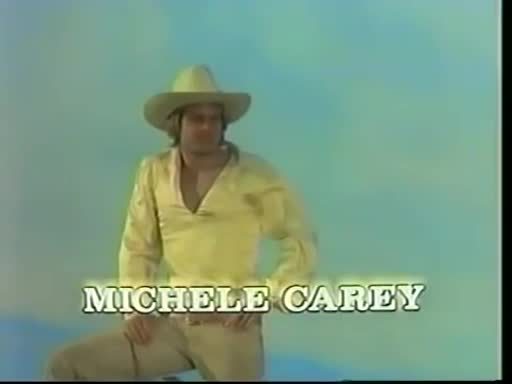
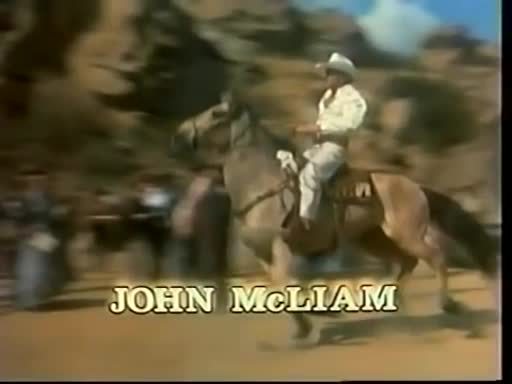

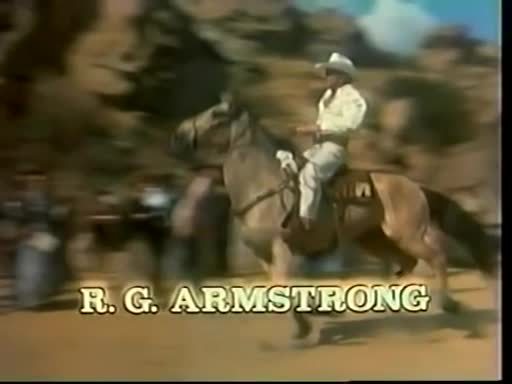
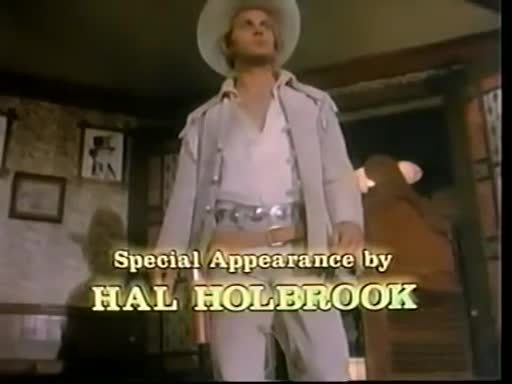
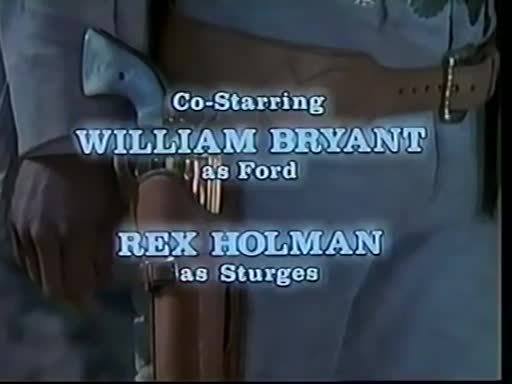
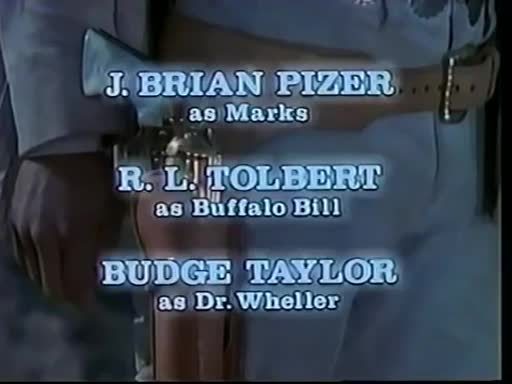
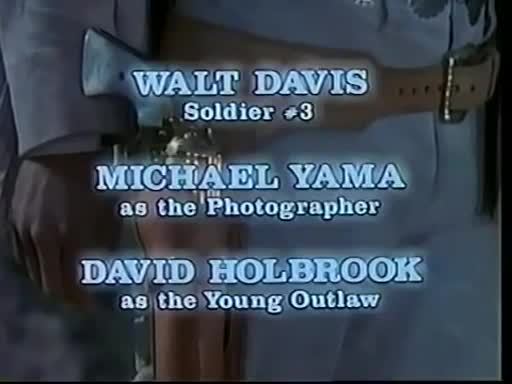
The Legend of the Golden Gun - NBC - April 10, 1979
Western (Pilot for a proposed series)
Running Time: 100 minutes
Stars:
Jeff Osterhage as John Golden
Carl Franklin as Joshua Brown
Robert Davi as William Quantrill
Keir Dullea as General Custer
Michele Carey as Maggie
John McLiam as Jake Powell
Elissa Leeds as Sara Powell
R. G. Armstrong as Judge Harrison Harding
Hal Holbrook as J.R. Swackhammer
William Bryant as William Ford (Father of Henry Ford)
Rex Holman as Sturges
J. Brian Pizer as Captain Marks
R. L. Tolbert as Buffalo Bill
Budge Taylor as Dr. Wheller
Walt Davis as Soldier #3
Michael Yama as The photographer
David Holbrook as The young outlaw
The movie is a cross between Star Wars and The Lone Ranger and paid homage to westerns of the 1940's and 1950's.
#The Legend of the Golden Gun#TV#NBC#Western#1970's#Jeff Osterhage#Carl Franklin#Hal Holbrook#Robert Davi
3 notes
·
View notes
Text

ANNIE CHAPMAN
Annie Chapman, 47 years old. On Saturday 8 September 1888 the body of Annie Chapman was discovered at about 6a.m. near the steps to the rear courtyard entrance of 29 Hanbury Street in Whitechapel. John Pizer was arrested for this murder, nicknamed until his identification as Leather Apron was exonerated the next day, when it was discovered that the apron belonged to a tenant of the building where the murder had been committed, which had been washed and hung up to dry. The killer remained unknown and the police had to suspects: they assumed he was either a fanatical lunatic or a sexual maniac with some moderate knowledge of anatomy.
4 notes
·
View notes
Text
The Black Hole - Disney’s Gothic Horror Tale
A little essay on a favorite film that I really would love to remake.
Back in 2010, TRON: Legacy was released. It was a long time follow up to their early 80's sci-fi hit. It's initial buzz stirred up rumor that another older Disney sci-fi film might get a reboot.
The Black Hole.
Made in 1979, it seemed to be part of the studio rush to replicate the success of Star Wars. It was also the same year Paramount’s slightly tedious Star Trek: The Motion Picture lumbered into theatres.
The sci-fi elements are definitely all there. Spaceships. Cute robots. Menacing robots. Laser blasts. A soaring musical score (by John Barry). Big budget EFX. And it had a simple sci-fi premise. A scientist plans to fly his ship into a black hole and see what is on the other side of space.
But, the script was something else entirely.
The film is old school gothic horror. It's a mad scientist / creature film harking back to the days of the Universal monster movies.
If you've not seen the film, here's a quick summary:
The USS Palomino, a small explorer vessel, is returning to Earth after 18 months in space. They pick up a massive black hole on their scanners. Before they can plot a course around, they find a mystery ship, peacefully sitting on the fringe of the vortex.
The crew decides to take a closer look. Its the USS Cygnus (named after the constellation), which is a massive science ship lost over 10 years. It sits a gravity bubble which they slip into but once they venture beyond it, the sheer forces start to pull them in the monstrous black hole beyond.
As the Palomino frantically scrambles to reach the oasis, the Cygnus suddenly comes alive with lights. They find a docking platform and land. Aboard the ship, they find a completely robotic crew run by a sole human survivor.
Dr. Hans Reinhart explains a catastrophe damaged the ship and the others evacuated. But he, using his scientific knowledge and sheer determination, repaired the Cygnus and created the gravity field the ship floats in.
But, there’s something rotten in this ship of death.
Bit by bit, the crew of the Palomino discover Reinhart's dark secrets and by the end make a bid to flee as he intends to plunge his ship into the black hole itself.
If you went just by the summary, The Black Hole sounds like a true sci-fi thriller but its the elements of the story that make it horror.
- The Ethereal Mountains of Transylvania -
The five crew members of the USS Palomino are a blend of men of action and curious thinkers. Captain Holland and Lieutenant Pizer are military men, as commander and co-pilot. Dr. McCrae (the sole woman aboard) and Dr. Durant are inquisitive scientists and Harry Booth is a dogged reporter along for the ride.
The last member is a snarky, barrel-shaped robot named V.I.N.CENT. who like R2D, handles the ship’s functions. But, he comes with vocal sense of educated humor and film adds a twist. V.I.N.CENT and Kate McCrae are able to communicate telepathically (the technology is not explained).
Now, imagine these people as weary travelers in a stage coach rather than a spaceship. They've navigated across the wilds of Eastern Europe only to be confronted by a terrible storm. Their coach becomes broken or their horses run away - leaving them stranded.
Isolated and alone, they find refuge from the massive storm in a mysterious darkened castle on a hill.
And that's what the Cygnus is. It's a gothic castle. The ship itself has two towering spires, bristles with turrets and buttresses. Once lit up, it becomes a stained-glass cathedral in space. And like that castle of yore, this steel one has a mad scientist inside, hard at work.
Like Frankenstein or Dr. Jekyll before him, Hans Reinhart is a classically molded mad scientist. A man driven by ego and a desire for discovery no matter the sacrifice. His bodyguard and chief robot drone, Maximillian is a space-going version of Frankenstein's monster - a mechanized killer who is completely loyal to the doctor's wishes (at least he seems to be). The ship is also manned by an army of armed droids and a crew of drone humanoids (more on them later).
- It's Alive! Alive! -
Now invited guests, the Palomino crew get the grand tour of the Cygnus and get some idea to length of Reinhart's genius and some inklings about the depths of his madness. And ever present, outside the massive panes of glass is the swirling vortex of the Black Hole - which itself is a character. The ever-present ancient God monster waiting to swallow them whole like any other hapless planet or star.
Needing to repair the Palomino, Captain Holland and his second go in search of tools and parts. They're escorted to a maintenance area where V.I.N.Cent meets B.O.B. - an older model repair bot like himself. Besides being damaged and even abused by the other robots aboard, old B.O.B. knows the truth about the Cygnus.
The crew of the behemoth starship never left. They're still aboard and still doing their duties. They ARE the drones. When the Cygnus was ordered to return, Reinhart wouldn't give up his dream.
Crewmen tried to wrest control from him, but the Mad Scientist had his army of security bots and Maximillian squash the mutiny. The poor remaining souls were rounded up and then zombified by another device of Reinhart's making. They became living corpses. Doomed to haunt their own ship. The idea of a ghost ship crewed by undead is a very creepy nightmare indeed.
And this is DISNEY movie.
- No Escape -
The horrors revealed and Reinhart's madness looming, the Palomino crew know they must flee the Cygnus before the inevitable. Dr. Durant, feeling his own scientific career was lacking, initially desired to remain aboard as the rest of our heroes politely head for the exits. But once he finds out the truth and tries to excuse himself, Reinhart's onto them. Attempting to flee, Durant to murdered by Maximillian before Reinhart can stop him. Which creates another moment of horror. As Dr. McRae reels in shock, Reinhart whispers to her that he fears the menacing robot he created. His own Frankenstein creation is exerting a will of its own and the scientist is losing control.
As the men of action dash to free Dr. McRae, who is on the block to be zombified, the reporter Harry Booth panics. Fearing the Cygnus is already too close to the black hole, he steals the Palomino in a vain effort. Not a trained pilot, Harry's erratic flying alarms Reinhart that he may damage the Cygnus and ruin his experiment. He has the scout ship blown to pieces by his ship's laser cannons.
The crew are now trapped in the haunted castle in space, with the voracious Black Hole swirling ahead and growing closer by the minute!
- Dante's Inferno -
In the final and possibly most controversial chapter of the Black Hole, the Palomino survivors fight to reach the Cygnus' probe ship in a desperate bid for freedom as the Cygnus plunges into the abyss. The titanic vessel, already damaged from the Palomino's collision, hurtles into a spiral - the event horizon between our universe and the next. Unable to escape the astronomical level of gravity, the crew dives the probe full speed into the Black Hole as the Cygnus collapses upon itself.
And here things take a surreal detour. The viewer is now witness to what might be a Hell in space as the crew see a strange vulcanite landscape with armies of drudging mournful souls and flame plumes. And high above, on a cliff, lording over them is Maximillian. But, he's changed. He's now some demonic hybrid of Maximillian's robotic body and Dr. Reinhart's helter-skelter eyes - looking out from within. Merged perhaps?
Is this some kind of shared hallucination of the crew as the fluctuations of gravity warp their minds as well as warp the reality around them?
One of the last images of the film is brightly lit cathedral-like tunnel where the viewer is over-taken by what appears to be angelic spirit in white. Then, suddenly the ship bursts out of a... white hole? a worm-hole on the other side of the galaxy or in another universe all-together.
The villains are dead or left behind, killed by the monster Reinhart courted.
- Dark Disney, Very Dark -
Watching The Black Hole through modern, adult eyes it's a wonder this movie didn't warp kid's minds. Likely because it was such a dud. It's slow with bland characters and really very little action until the end. All of it odd because Disney seemed to push it at kids with V.I.N.Cent being in all the promotional material. Disney spent a LOT of time and money making Black Hole tie-in products, mostly for younger kids.
Meanwhile, this film had a mad scientist who was responsible for mass murdering members of his crew, then sentencing the rest of them to life as brain-fried zombies. Hundreds of them. Maximillian slaughters a man with rotating knives (though not shown you can watch Anthony Perkin's face and hear the grinding sounds clearly).
Then after all that Hell, you plunge the little tots through a virtual Hell with your own robot Satan overseeing all the doomed souls being tortured.
Of course our scientific knowledge of what black holes are make this film a complete fantasy. Even in 1979, there wasn’t much science to suggest a black hole was a conduit anywhere but rather a gravitational phenomenon that merely grows larger as it consumers more matter to itself.
And what might be the saddest, scariest thing? I really wished Disney would reboot it. I really want to see a well-done Black Hole - even if Neil DeGrasse Tyson called it the most unscientific movie ever etc. I know this movie's ideas could be really cool. Even if it's still a brooding dark horror film.
0 notes
Photo
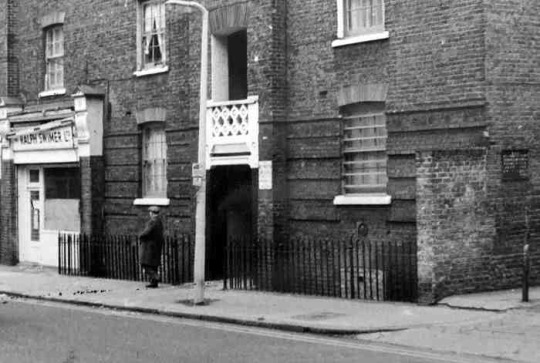
Goulston Street Grafitti
After the murders of Elizabeth Stride (Dutfield's Yard, Berner Street, Whitechapel) and Catherine Eddowes (Mitre Square, City of London) in the early morning hours of 30 September 1888, police searched the area near the crime scenes in an effort to locate a suspect, witnesses or evidence.
Catherine Eddowes' murder
Catherine Eddowes was last seen alive at 1.35 a.m. by three witnesses, Joseph Lawende, Joseph Hyam Levy and Harry Harris, who had just left a club on Duke Street. She was standing talking with a man at the entrance to Church Passage, which led south-west from Duke Street to Mitre Square along the south wall of the Great Synagogue of London. Only Lawende could furnish a description of the man, whom he described as a fair-moustached man wearing a navy jacket, peaked cloth cap, and red scarf. Chief Inspector Donald Swanson intimated in his report that Lawende’s identification of the woman as Eddowes was doubtful. He wrote that Lawende had said that some clothing of the deceased’s that he was shown resembled that of the woman he saw—“which was black … that was the extent of his identity [sic]”. A patrolling policeman, PC James Harvey, walked down Church Passage from Duke Street very shortly afterwards but his beat took him back down Church Passage to Duke Street, without entering the square. Eddowes, then an unidentified victim, was found by policeman PC Edward Watkins, who said that he entered the square at 1:44 a.m, having previously been there at 1:30 a.m.
Even while Metropolitan police investigated the crime scene on Berner street, constables from the City Police were called to the horrifying display in Mitre Square. City Detective Constable Daniel Halse was over by St Botolph's Church when he learnt of the murder at just before 2am. Hurrying to Mitre Square, he gave instructions to the constables present to head off and search the neighbourhood. He and Detective Constable Edward Marriott led canvassing of the area for clues and suspects. DC Halse then set off to make his own search, heading first for Middlesex Street, from which he turned into Wentworth Street, where he stopped to question two men he encountered, both of whom gave him a satisfactory account of their movements, and so he allowed them to continue on their way.
He then passed through Goulston Street at around 2.20am where, having found nothing out of the ordinary, he doubled back and returned to Mitre Square. On arrival, he discovered that the body had been taken to the mortuary in Golden Lane, so he made his way there and, on arrival, he was informed that a fragment of the woman's apron had, apparently, been taken away by her killer.
Discovery
At about 2:55~3 a.m. of September 30th, 1888, Constable Alfred Long of the Metropolitan Police Force found a blood-stained fragment of Catherine’s apron lying in the passage of the doorway leading to Flats 108 and 119, Model Dwellings, Goulston Street, Whitechapel. Above it on the wall was a graffito in white chalk. He copied the words from the wall into his pocket book. After calling a constable (PC 190H) from the adjoining beat, Long made a search of the staircases but found no trace of blood or persons.
He proceeded to Commercial Street Police Station and reported the discovery of the apron and writing to the Inspector on duty who accompanied him back to Goulston Street. After inspecting the scene, they went to Leman Street Police Station where the Inspector handed over the portion of Eddowes' apron to Dr. George Bagster Phillips. PC Long had, in fact, walked past the same doorway at 2.20am, at more or less the same time that Daniel Halse had also passed through Goulston Street, and, like Halse, he had seen nothing out of the ordinary. Indeed, he was emphatic that he would, most certainly, have noticed had the piece of apron been there then and he was, therefore, sure that it hadn't been. Long was unable to say whether the graffito had been there at that time. Neither could he form any opinion as to whether the writing was recent.
The exact position of the writing is still uncertain. It is not clear as to whether it was on the left or right hand side of the doorway, or where it was positioned exactly in relation to the discarded piece of apron, save that it was 'above it'. According to DC Halse of the city of London Police the writing was on 'the black facia of the wall' and appeared to have been written recently. Metropolitan Police Commissioner Sir Charles Warren stated that "the writing was on the jamb of the open archway or doorway visible to anybody in the street..." Chief Inspector Swanson described the writing as being "upon the wall of a common stairs", also claiming that it was blurred. Police Superintendent Thomas Arnold's report suggests that the writing was at shoulder height.

[Copy of graffito in Goulston Street, attached to Metropolitan Police Commissioner Sir Charles Warren's report to the Home Office on the Whitechapel murders. Wikipedia.]
Versions
There are at least 5 different versions of what was written in the graffito:
PC Long told at an inquest that it read ”The Juwes are the men that Will not be Blamed for nothing“. A copy according with Long’s version of the message was attached to a report from Sir Charles Warren to the Home Office (pictured above).
DC Halse arrived short time later, and took down a different version: “The Juwes are not the men who will be blamed for nothing”.
City Surveyor Frederick William Foster recorded a third version: “The Juws are not the men To be blamed for nothing”.
Superintendent Thomas Arnold, who visited the scene and saw the writing, wrote it in his report of 6 November (posted also below) as "The Juews are the men that will not be blamed for nothing".
A summary report on the writing by Chief Inspector Swanson rendered it as “The Jewes are not the men to be blamed for nothing”. However, it is uncertain if Swanson ever saw the writing.

[Sir Charles Warren looking at the graffiti in a contemporary press newspaper. From Jack the ripper.org]
Removal
Soon, officers of the Metropolitan Police were gathering around the doorway and were gazing at the graffito with feelings of great trepidation.
At the time, Whitechapel was home to a growing number of Jewish immigrants from all over Europe. They were viewed with suspicion because of their often socialist political views, as well as from plain old racial prejudice. A notorious murder case had recently taken place in the neighborhood perpetrated by a Jewish man named Israel Lipski, and his name had turned into a slur against Jewish people. Religious tensions were already high, and there had already been many near-riots. Mindful of the strong feelings of anti-Semitism that had surfaced in the area, and realizing that Wentworth Model Dwellings not only stood in a largely Jewish locality, but was also inhabited almost exclusively by Jews, the Metropolitan Police began to fear that if the message was left, it could lead to a resurgence of racial unrest in the district and the consequences could be dire.
While the Goulston Street graffito was found in Metropolitan Police territory, the apron piece was from a victim killed in the City of London, which has a separate police force. Arnold ordered a man to be standing by with a sponge to erase the writing, while he consulted Commissioner Warren. Covering it in order to allow time for a photographer to arrive or removing a portion of it were considered, but Arnold and Warren (who personally attended the scene) considered this to be too dangerous.
The removal of the writing was a contoversial action, in spite of the fact that Inspector James McWilliam, head of the City Police Detective Department, had given an immediate order for it to be photographed. The Metropolitan Police pointed out that that would mean waiting until it was light, by which time gentile purchasers would be arriving in their thousands to purchase from the Jewish stallholders at the Petticoat Lane and Goulston Street Sunday markets. Since there was no way of keeping it hidden from these crowds, the Metropolitan Police were convinced the result might be a full scale riot against the Jews.
Some officers disagreed with Arnold and Warren's decision, especially those representing the City of London Police, like DC Halse, who thought the writing constituted part of a crime scene, but it was wiped from the wall at 5:30 a.m. Even Sir Robert Anderson said that the removal of such an important potential clue was an act of crass stupidity.
Superintendent Arnold, in his report of 6 November 1888 to the Home Office, he claimed, that with the strong feeling against the Jews that already existed, the message might have become the means of causing a riot:
"I beg to report that on the morning of the 30th Sept. last, my attention was called to some writing on the wall of the entrance to some dwellings at No. 108 Goulston Street, Whitechapel which consisted of the following words: "The Juews are not [the word 'not' being deleted] the men that will not be blamed for nothing", and knowing in consequence of suspicion having fallen upon a Jew named 'John Pizer' alias 'Leather Apron' having committed a murder in Hanbury Street a short time previously [Annie Chapman], a strong feeling existed against the Jews generally, and as the Building upon which the writing was found was situated in the midst of a locality inhabited principally by that Sect, I was apprehensive that if the writing were left it would be the means of causing a riot and therefore considered it desirable that it should be removed having in view the fact that it was in such a position that it would have been rubbed by persons passing in & out of the Building. Had only a portion of the writing been removed the context would have remained. An Inspector was present by my directions with a sponge for the purpose of removing the writing when the Commissioner arrived on the scene".
Sir Charles Warren's report of the same day is on similar lines:
" ...it was just getting light, the public would be in the streets in a few minutes, in a neighbourhood very much crowded by Jewish vendors and Christian Purchasers from all parts of London...The writing was on the jamb of the open archway or doorway visible to anybody in the street and could not be covered up without danger of the covering been torn off at once. A discussion took place whether the writing could be left covered up or otherwise or whether any portion of it could be left for an hour until it could be photographed; but after taking into consideration the excited state of the population in London generally at the time, the strong feeling which had been excited against the Jews, and the fact that in a short time there would be a large concourse of the people in the streets, and having before me the Report that if it was left there the house was likely to be wrecked (in which from my own observation I entirely concurred) I considered it desirable to obliterate the writing at once, having taken a copy of which I enclose a duplicate.
After having been to the scene of the murder, I went on to the City Police Office and informed the Chief Superintendant of the reason why the writing had been obliterated.
I may mention that so great was the feeling with regard to the Jews that on the 13th ulto. the Acting Chief Rabbi wrote to me on the subject of the spelling of the word "Jewes" on account of a newspaper asserting that this was Jewish spelling in the Yiddish dialect. He added "in the present state of excitement it is dangerous to the safety of the poor Jews in the East [End] to allow such an assertion to remain uncontradicted. My community keenly appreciates your humane and vigilant action during this critical time.
It may be realised therefore if the safety of the Jews in Whitechapel could be considered to be jeopardised 13 days after the murder by the question of the spelling of the word Jews, what might have happened to the Jews in that quarter had that writing been left intact.
I do not hesitate myself to say that if that writing had been left there would have have been an onslaught upon the Jews, property would have been wrecked, and lives would probably have been lost; and I was much gratified with the prompitude with which Superintendent Arnold was prepared to act in the matter if I had not been there."
Investigation
The police interviewed all the residents of 108–119 Goulston Street, but were unable to trace either the writer of the graffito or the murderer.
The journey from Mitre Square, where Catherine was murdered, to Goulston Street, where her blood stained piece of apron was found, takes a little under ten minutes at a brisk pace. DC Halse had walked it in twenty or so minutes, and he was on the look out for suspicious looking characters, and had even stopped to question the two men he had encountered en route.
There are, admittedly, several possible routes that the murderer could have taken, but they can all be done at a rapid pace in around ten minutes or less.
If Long and Halse were correct in their assertion that the portion of apron hadn't been there at 2.20am, then the murderer had loitered in the area for anywhere between 35 minutes and an hour, during which time the police were fanning out into the area to search for him, and were stopping and questioning any man they met.
Walter Dew, a detective constable in Whitechapel, tended to think that the writing was irrelevant and unconnected to Catherine's murder, whereas Chief Inspector Henry Moore and Sir Robert Anderson, both from Scotland Yard, thought that the graffito was the work of the murderer. Contemporary police concluded that the text was a semi-literate attack on the area's Jewish population.
Mitre Square had three connecting streets: Church Passage to the north-east, Mitre Street to the south-west, and St James’s Place to the north-west. As in their beats PC Watkins saw no-one from Mitre Street, and PC Harvey saw no-one from Church Passage, the murderer must have left the square northwards through St James’s Place towards Goulston Street. Goulston Street was within a quarter of an hour’s walk from Mitre Square.
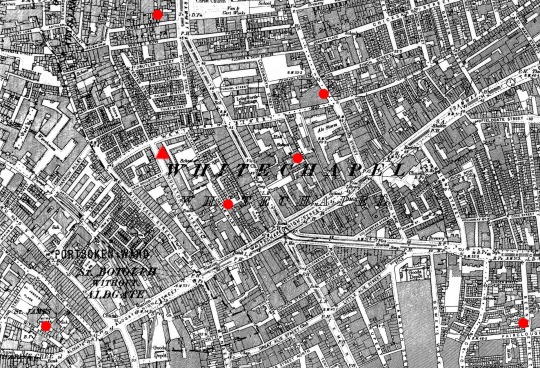
[Map showing the location of the graffito (red triangle) in relation to 6 of the murder sites (red circles). Bottom left: Mitre Square (where Catherine Eddowes was found); Bottom right: Berner Street(where Elizabeth Stride was found). Others (clockwise from top): Dorset Street (Mary Jane Kelly), Osborn Street (Emma Elizabeth Smith), George Yard (Martha Tabram), Castle Alley (Alice McKenzie). Wikipedia.]
Theories
To this day, there is no consensus on whether or not the graffito is relevant to the murders. Some modern researchers believe that the apron fragment’s proximity to the graffito was coincidental and it was randomly discarded rather than being placed near it. If, as some writers contend, the apron fragment was cut away by the murderer(s) to use to wipe his hands, he could have discarded it near the body immediately after it had served that purpose, or he could have wiped his hands on it without needing to remove it.
According to historian Philip Sugden there are at least three permissible interpretations of the graffiti: "All three are feasible, not one capable of proof." The first is that the writing was not the work of the murderer at all: the apron piece was dropped near the writing either incidentally or by design. The second would be to "take the murderer at his word"—a Jew incriminating himself and his people. The third interpretation was, according to Sugden, the one most favoured at the Scotland Yard and by "Old Jewry": The chalk message was a deliberate subterfuge, designed to incriminate the Jews and throw the police off the track of the real murderer.
Author and former homicide detective Trevor Marriott has raised another possibility (2005): the piece of apron may not necessarily have been dropped by the murderer on his way back to the East End from Mitre Square. The victim herself might have used it as a sanitary towel, and dropped it on her way from the East End to Mitre Square. Although Caterine’s cause of death was Haemorrhage due to severance of the left common carotid artery, thus her heart wouldn’t have stopped beating by the time he cut her throat and so he wouldn’t have avoided the arterial spurt that would have resulted in him becoming heavily bloodstained when he cut the carotid artery.
***
TO KNOW MORE
Wikipedia
Casebook Wiki
Casebook dissertation
Casebook dissertation 'A curious find'
Casebook Forums
Project Gutenberg Self Publishing Press
Jack The Ripper.org
Jack the Ripper tour
Whitechapel Jack
JTR Forums: Goulston Street
Jack Lo Squartatore (Italian blog)
Red Jack (Italian blog)
BEGG, Paul (2003): Jack the Ripper: The Definitive History.
EVANS, Stewart P. & RUMBELOW, Donald (2006): Jack the Ripper: Scotland Yard Investigates.
EVANS, Stewart P. & SKINNER, Keith (1997, 2001): Jack the Ripper: Letters from Hell.
EVANS, Stewart P. & SKINNER, Keith (2000): The Ultimate Jack the Ripper Sourcebook: An Illustrated Encyclopedia.
FIDO, Martin (1987). The Crimes, Death and Detection of Jack the Ripper.
MARRIOTT, Trevor (2005): Jack the Ripper: The 21st Century Investigation.
RUMBELOW, Donald (2004): The Complete Jack the Ripper: Fully Revised and Updated.
SUGDEN, Philip (1994, 2002): The Complete History of Jack the Ripper.
#Goulston Street#Goulston Street Grafitti#Goulston Street Grafitto#Catherine Eddowes#Kate Conway#PC Long#1888#Whitechapel Murders#PC Alfred Long#Superintendent Thomas Arnold#DC Daniel Halse#Frederick William Foster#Superintendent Donald Sutherland Swanson#Sir Charles Warren#John Pizer#Detective Walter Dew#Chief Inspector Henry Moore#Sir Robert Anderson#PC Edward Watkins#PC James Harvey#Mitre Square#place#places#murder scene#crime scene#James McWilliam#leather apron#Wentworth Dwellings#DC Edward Marriott
9 notes
·
View notes
Text
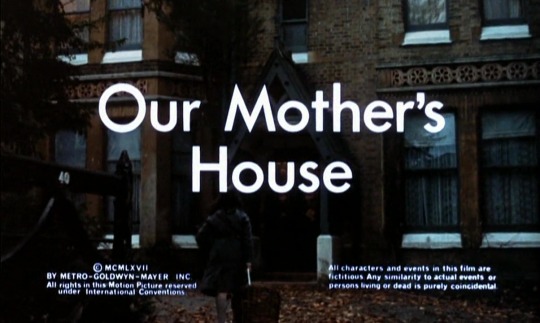

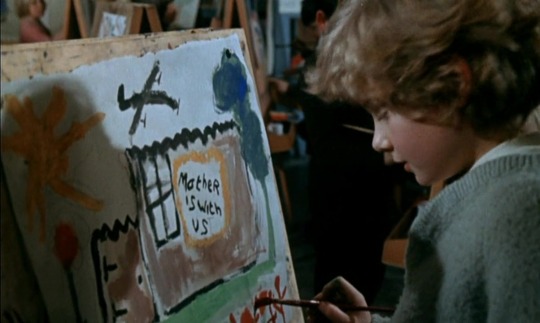
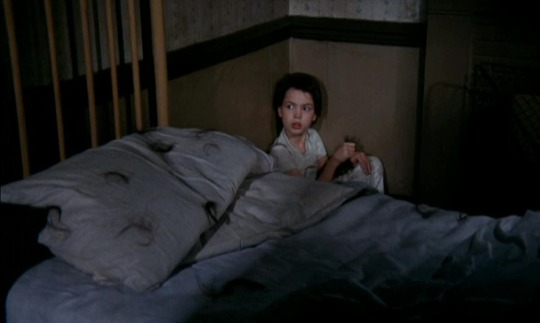
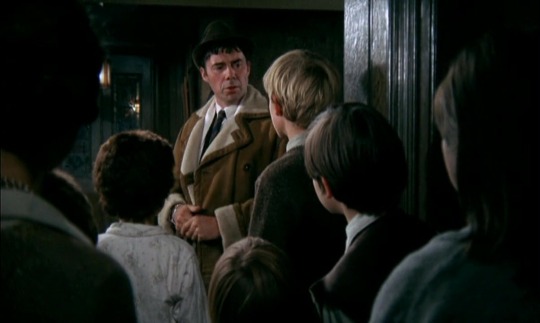
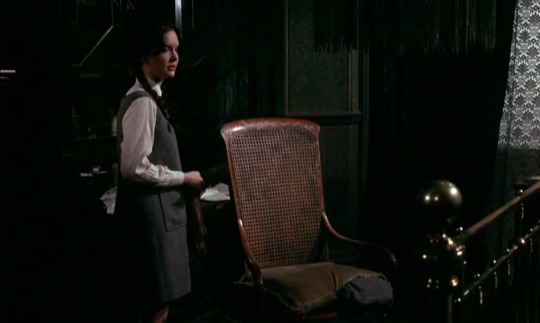


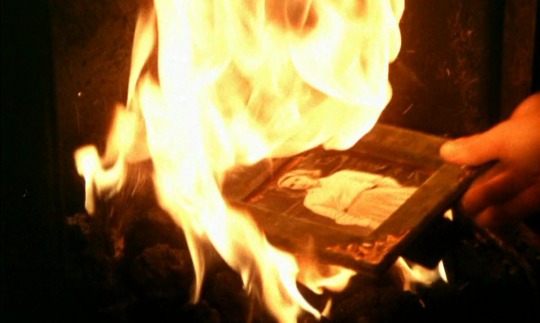
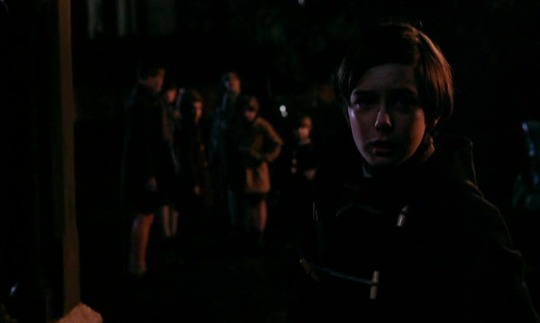
Our Mother's House (1967)
Director - Jack Clayton, Cinematography - Larry Pizer
"We buried her in the garden."
#scenesandscreens#Our Mother's House#jack clayton#Larry Pizer#dirk bogarde#Margaret Brooks#pamela franklin#Louis Sheldon Williams#John Gugolka#mark lester#Sarah Nicholls#Gustav Henry#Yootha Joyce#Annette Carell
47 notes
·
View notes
Text
Of the bills proposed so far, Freedom For All Americans is most concerned about two proposals in Montana -- one that bans trans students from playing a school sport and another that would ban trans kids from receiving gender-affirming health care. Both bills have passed in the Montana House and will soon reach the state Senate, said Angela Dallara of Freedom for All Americans.
Montana Rep. John Fuller, who sponsored both bills, said the measures are necessary because "every child deserves a natural childhood, one that allows them to experience puberty and other normal changes that shape who they will become," according to the Montana Free Press.
If the state does pass the bills, it won't be done quietly. Several trans and non-binary Montana residents testified online and in person this month about the harm the school sports bill would cause young trans people in the state despite supporters of the bill continuing to use offensive language and misgender trans people, the SB Nation blog Outsports reported.
Much of the reason similar bills don't pass is because of the overwhelming opposition to them, Mallory said, funded by civil rights organizations like the American Civil Liberties Union and led by local activists. Lawmakers in many of the same states where discriminatory bills have been proposed have introduced bills of their own that bolster nondiscrimination laws and better protect trans and LGBTQ people, Freedom For All Americans' legislative tracker shows.
Vocal opposition is working: Pizer said her Lambda Legal colleagues sent a written testimony explaining why a South Dakota bill that would ban correcting one's gender on a birth certificate was unconstitutional. It seems they were heard -- the bill failed to advance out of committee, Pizer said.
#the part that stood out apart from there was where they said that lawmakers are doing this as A Signal to the Biden administration#which is unsurprising but also a little depressing#threatening trans kids to own the Libs
56 notes
·
View notes
Text
540 Local Elected Officials From All 50 States Urge Prez Trump to Import More Refugees to U.S.
Joe Biden has promised to make this happen, including taking in foreigners from terrorist hotspots around the world. In fact, Joe Biden was one of the original architects of the fraud-ridden refugee program that has destroyed neighborhoods across the U.S.

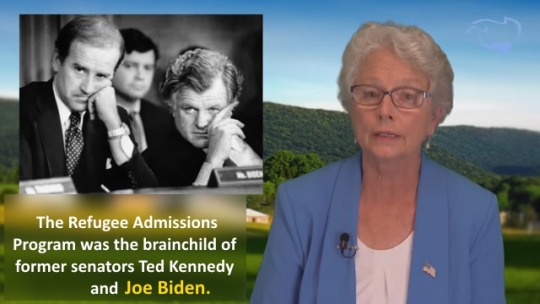
by Ann Corcoran
I told you here that the refugee industry was working on a letter to the President urging him to get the refugee flow into America moving again.
Yesterday they sent the letter with 540 signatories.
Says Amnesty International:
By signing this letter, these elected officials have joined together to voice their commitment to welcoming refugees in their communities and reviving the United States’ legacy as a leader in refugee resettlement.
I notice something missing from the letter. It avoids giving the President a number, but the industry has made it very clear!
They want 95,000 refugees to begin arriving on October first.
The President could make a decision this month on how many refugees might be invited to live in the US in FY2021. He could also legally set the ceiling at zero.
All of my posts on the topic are tagged FY2021.
Here are the signatories from yesterday. The list is handy for identifying those local elected officials who are changing America by changing the people.
I don’t know why the organizers think that these open borders advocates will hold any sway with the President, but they sure make it handy for you to identify the other side where you live. Target them for retirement when they come up for re-election!
(For a little additional fun, see last year’s list here.)
They say the list is bipartisan, but there is no indication of party affiliation. You will need to look through those listed in your state to see if Republicans are among those looking to import more poverty to your city.
[Find your state in the list below the fold]
Alabama
Gary Palmer, State Representative, Birmingham
Neil Rafferty, State Representative, Birmingham
Alaska
Elvi Gray-Jackson, State Senator, Anchorage
Andrew Josephson, State Representative, Juneau
Arizona
Ylenia Aguilar, School Board Member, Phoenix
Lela Alston, State Senator, Phoenix
Richard Andrade, State Representative, Phoenix
Andres Cano, State Representative, Tucson
Steven Chapman, Governing Board Member, Phoenix
Cesar Chavez, State Representative, Phoenix
Paul Cunningham, Vice Mayor, Tucson
Andrea Dalessandro, State Senator, Green Valley
Devin Del Palacio, School Board Member, Tolleson
Elora Diaz, School Governing Board Member, Phoenix
Paul Durham, Councilmember, Tucson
Diego Espinoza, State Representative, Avondale
Charlene Fernandez, State Representative, Phoenix
Kristel Ann Foster, School Board President, Tucson
Randall Friese, State Representative, Tucson
Rosanna Gabaldon, State Representative, Sahuarita
Kate Gallego, Mayor, Phoenix
Carlos Garcia, Councilmember, Phoenix
Betty Guardado, Vice Mayor, Phoenix
Daniel Hernandez, State Representative, Tucson
Berdetta Hodge, Tempe Union Governing Board President, Tempe
Steve Kozachik, Councilmember, Tucson
Lauren Kuby, Councilmember, Tempe
Pedro Lopez, Governing Board Member, Phoenix
Adam Lopez-Falk, School Board Member, Phoenix
Lindsay Love, Chandler Unified School District Governing Board Member, Chandler
Juan Mendez, State Senator, Tempe
Patrick Morales, Vice President of the Tempe School Elementary Board and Governing Board Member, Tempe
The Honorable Channel Powe, Governing Board President, Phoenix
Stanford Prescott, Governing Board Member, Phoenix Union High School District, Phoenix
Martín Quezada, State Senator, Phoenix
Rebecca Rios, State Senator, Phoenix
Diego Rodriguez, State Representative, Laveen
Regina Romero, Mayor, Tucson
Athena Salman, State Representative, Tempe
Lane Santa Cruz, Councilmember, Tucson
Raquel Teran, State Representative, Phoenix
Monica Trejo, School Board Member, Tempe
Corey D. Woods, Mayor, Tempe
Arkansas
Andrew Collins, State Representative, Little Rock
Megan Godfrey, State Representative, Springdale
Sonia Gutierrez, Councilmember, Fayetteville
Lioneld Jordan, Mayor, Fayetteville
Matthew Petty, Councilmember, Fayetteville
Joy Springer, State Representative, Little Rock
California
Cecilia Aguiar-Curry, Assemblymember, Sacramento
John J. Bauters, Councilmember, Emeryville
Bob Blumenfield, Councilmember, Los Angeles
Maya Esparza, Councilmember, San Jose
Kevin Faulconer, Mayor, San Diego
Eric Garcetti, Mayor, Los Angeles
Sam Hindi, Councilmember, Foster City
Johnny Khamis, Councilmember, San Jose
Paul Koretz, Councilmember, Los Angeles
Sheila Kuehl, County Supervisor, Los Angeles
Gordon Mar, City and County Supervisor, San Francisco
Peggy McQuaid, Vice Mayor, Albany
Lisa Middleton, Councilmember, Palm Springs
Hillary Ronen, Supervisor, San Francisco
Philip Y. Ting, Assemblymember, San Francisco
Norman Yee, President, Board of Supervisors of the City and County of San Francisco
Colorado
KC Becker, State Representative, Boulder
Yadira Caraveo, State Representative, Thornton
Lisa Cutter, State Representative, Littleton
Stephen Fenberg, State Senate Majority Leader, Boulder
Stacie Gilmore, Councilmember, Denver
Julie Gonzales, State Senator, Denver
Michael Hancock, Mayor, Denver
Eva Henry, County Commissioner, Thornton
John Kefalas, County Commissioner, Fort Collins
Chris Kennedy, State Representative, Lakewood
Cathy Kipp, State Representative, Fort Collins
Robin Kniech, Councilwoman At-Large, Denver
Jacob LaBure, Councilman, Lakewood
Pete Lee, State Senator, Colorado Springs
Susan Lontine, State Representative, Denver
Dominick Moreno, State Senator, Commerce City
Crystal Murillo, Councilmember, Aurora
Deborah Ortega, Councilmember At-Large, Denver
Dylan Roberts, State Representative, Avon
Amanda P. Sandoval, Councilwoman, Denver
Lauren Simpson, Councilmember, Arvada
Sam Weaver, Mayor, Boulder
Steven Woodrow, State Representative, Denver
Connecticut
Roland Lemar, State Representative, New Haven
Matthew Lesser, State Senator, Middletown
Edwin Vargas, State Representative, Hartford
Delaware
Bruce C. Ennis, State Senator, Dover
District of Columbia
Brianne K. Nadeau, Councilmember
Brooke Pinto, Councilmember
Elissa Silverman, Councilmember
Florida
Trish Becker, Special District County Commissioner, St. Augustine
Christopher Benjamin, State Representative, Miami Gardens
Lori Berman, State Senator, Delray Beach
Mack Bernard, County Commissioner, West Palm Beach
Marlon Bolton, Mayor, Tamarac
Emma Collum, Supervisor, Fort Lauderdale
Fentrice Driskell, State Representative, Tampa
Bobby DuBose, State Representative, Fort Lauderdale
Nicholas Duran, State Representative, Miami
Buddy Dyer, Mayor, Orlando
Anna Eskamani, State Representative, Orlando
Jelani Harvey, Supervisor, Plantation
Sabrina Javellana, Vice Mayor, Hallandale Beach
Evan Jenne, State Representative, Hollywood
Shevrin Jones, State Representative, West Park
Dotie Joseph, State Representative, Miami
Vanessa Joseph, City Clerk, North Miami
Sarah Leonardi, Broward School Board Member-Elect, Pompano Beach
Amy Mercado, State Representative, Orlando
Cindy Polo, State Representative, Hialeah
Tina Polsky, State Representative, Boca Raton
Harold Pryor, Broward County State Attorney-Elect, Broward County
Chelsea Reed, Councilmember, Palm Beach Gardens
Alissa Schafer, Supervisor, Soil & Water Conservation District, Pembroke Pines
Joshua Simmons, Commissioner, Coral Springs
Nick Sortal, Councilmember, Plantation
Carlos Guillermo Smith, State Representative, Orlando
Linda Stewart, State Senator, Orlando
Annette Taddeo, State Senator, Miami
Victor Torres, State Senator, Orlando/Kissimmee
Georgia
Becky Evans, State Representative, Atlanta
Anthony Ford, Mayor, Stockbridge
Steve Henson, State Senator, Stone Mountain
Zulms Lopez, State Representative-Elect, Atlanta
Pedro Marin, State Representative, Duluth
Hawaii
Stanley Chang, State Representative, Honolulu
Roy Takumi, State Representative, Honolulu
Tina Wildberger, State Representative, Kihei
Idaho
Shawn Barigar, Councilmember ember, Twin Falls
Jimmy Hallyburton, Councilmember, Boise
Kendra Kenyon, County Commissioner, Boise
Diana Lachiondo, County Commissioner, Boise
Lauren McLean, Mayor, Boise
Lauren Necochea, State Representative, Boise
Melissa Wintrow, State Representative, Boise
Illinois
Alma Anaya, County Commissioner, Chicago
Scott Britton, County Commissioner, Glenview
James Cappleman, Alderman, Chicago
Melissa Conyears-Ervin, City Treasurer, Chicago
Daniel Didech, State Representative, Buffalo Grove
Laura Fine, State Senator, Glenview
Robyn Gabel, State Representative, Evanston
Edgar Gonzalez, Jr., State Representative, Chicago
Will Guzzardi, State Representative, Chicago
Lindsey LaPointe, State Representative, Chicago
Daniel La Spata, Alderman, Chicago
Lori E. Lightfoot, Mayor, Chicago
Raymond Lopez, Alderman, Chicago
Matthew Martin, Alderman, Chicago
Kevin Morrison, County Commissioner, Schaumburg
Jonathan “Yoni” Pizer, State Representative, Chicago
Ann Rainey, Alderman, Evanston
George Van Dusen, Mayor, Skokie
Andre Vasquez, Alderman, Chicago
Indiana
Zach Adamson, City Councilor, Indianapolis
John Hamilton, Mayor, Bloomington
Blake Johnson, State Representative, Indianapolis
Iowa
Marti Anderson, State Representative, Des Moines
Tracy Ehlert, State Representative, Cedar Rapids
Lindsay James, State Representative, Dubuque
Mary Mascher, State Representative, Iowa City
Andy McKean, State Representative, Anamosa
Brent Oleson, County Commissioner, Marion
Art Staed, State Representative, Cedar Rapids
Zacharia Wahls, State Senator, Coralville
Stacey Walker, County Supervisor, Cedar Rapids
Kansas
Lacey Cruse, County Commissioner, Wichita
Joyce Warshaw, Mayor, Dodge City
Rui Xu, State Representative, Westwood
Kentucky
Nima Kulkarni, State Representative, Louisville
Susan Westrom, State Representative, Lexington
Louisiana
Cyndi Nguyen, Councilmember, New Orleans
Maine
Pious Ali, City Councilor At-Large, Portland
Brownie Carson, State Senator, Harpswell
Kristen S. Cloutier, State Representative, Lewiston
Jim Handy, State Representative, Lewiston
Thom Harnett, State Representative, Gardiner
Deane Rykerson State Representative, Kittery Point
Denise Tepler, State Representative, Topsham
Maryland
Malcolm Augustine, State Senator, Annapolis
Colin Byrd, Mayor, Greenbelt
Julie Palakovich Carr, Delegate, District 17
Kathleen Dumais, State Representative, Annapolis
Cindy Dyballa, Councilmember, Takoma Park
Brian Feldman, State Senator, Annapolis
Jessica Feldmark, Delegate, Columbia
David Fraser-Hidalgo, Delegate, Annapolis
Dannielle Glaros, County Councilmember, Upper Marlboro
Evan Glass, County Councilmember, Montgomery County
Edouard Haba, Councilmember, Hyattsville
Tom Hucker, Montgomery County Councilmember, Silver Spring
Julian Ivey, Delegate, Cheverly
Anne Kaiser, Delegate, Silver Spring
Kacy Kostiuk, Councilmember, Takoma Park
Clarence Lam, State Senator, Columbia
Susan Lee, State Senator, Annapolis
Mary Lehman, State Representative, Laurel
Sara Love, Delegate, Annapolis
David Moon, Delegate, Takoma Park
Joseline Peña-Melnyk, Delegate, Annapolis
Paul Pinsky, State Senator, Hyattsville
Sheila Ruth, Delegate, Baltimore
Emily Shetty, Delegate, Kensington
Jeffrey Zane Slavin, Mayor, Somerset
Kate Stewart, Mayor, Takoma Park
Deni Taveras, County Councilmember, Adelphi
Jeff Waldstreicher, State Senator, Kensington
Jheanelle Wilkins, Delegate, Silver Spring
Patrick Wojahn, Mayor, College Park
Massachusetts
Kenzie Bok, Councilor, Boston
Candy Mero Carlson, City Councilor, Worcester
Harriette Chandler, State Senator, Worcester
Jo Comerford, State Senator, Florence
Natalie Higgins, State Representative, Leominster
Adam Hinds, State Senator, Pittsfield
Kay Khan, State Representative, Newton
Daniel Koh, Selectboard Member, Andover
Jack Patrick Lewis, State Representative, Framingham
Michael Moore, State Senator, Worcester
David J. Narkewicz, Mayor, Northampton
Tram Nguyen, State Representative, Andover
William Reichelt, Mayor , West Springfield
Lindsay Sabadosa, State Representative, Northampton
Jeffrey Thielman, Arlington School Committee Member, Arlington
Martin J. Walsh, Mayor, Boston
Michigan
Rosalynn Bliss, Mayor, Grand Rapids
Brandon Haskell, County Commissioner, Lansing
Steve Maas, Mayor, City of Grandville
Gwen Markham, County Commissioner, Novi
William Miller, County Commissioner, Pontiac
Kurt Reppart, City Commissioner, Grand Rapids
Monica Sparks, County Commissioner, Kentwood
Robert Wittenberg, State Representative, Huntington Woods
Milinda Ysasi, City Commissioner, Grand Rapids
Doug Zylstra, County Commissioner, Holland
Minnesota
Peter Fischer, State Representative, Maplewood
Jacob Frey, Mayor, Minneapolis
Cam Gordon, Councilmember, Minneapolis
Alice Hausman, State Representative, Saint Paul
Kaohly Her, State Representative, Saint Paul
Melissa Hortman, State Representative, Brooklyn Park
Mitra Jalali, Councilmember, Saint Paul
Frank Jewell, County Commissioner, Duluth
Andrew Johnson, Councilmember, Minneapolis
Sydney Jordan, State Representative, Minneapolis
Fue Lee, State Representative, Saint Paul
Jamie Long, State Representative, Minneapolis
John Marty, State Senator, Roseville
Rena Moran, State Representative, Saint Paul
Beth Olson, County Commissioner, Duluth
Rafael E. Ortega, County Commissioner, Saint Paul
Sandy Pappas, State Senator, Saint Paul
Dave Pinto, State Representative, Saint Paul
Victoria Reinhardt, County Commissioner, White Bear Lake
Cory Springhorn, Councilmember, Shoreview
Jay Xiong, State Representative, Saint Paul
Mississippi
Christopher Bell, State Representative, Jackson
Chokwe Antar Lumumba, Mayor, Jackson
Missouri
LaDonna Appelbaum, State Representative, St. Louis
Shane Cohn, Alderman, St. Louis
Marlene Davis, Alderwoman, St. Louis
Christine Ingrassia, Alderwoman, St. Louis
Kip Kendrick, State Representative, Columbia
Lyda Krewson, Mayor, St. Louis
Heather Navarro, Alderwoman, St. Louis
Lewis Reed, President, Board of Aldermen, St. Louis
Annie Rice, Alderwoman, St. Louis
Montana
Dick Barrett, State Senator, Missoula
Mary Ann Dunwell, State Representative, Helena
John Engen, Mayor, Missoula
Moffie Funk, State Representative, Helena
Katharin Kelker, State Representative, Billings
Marilyn Marler, State Representative, Missoula
Penny Ronning, Councilwoman, Billings
David Strohmaier, County Commissioner, Missoula
Juanita Vero, County Commissioner, Missoula
Tom Winter, State Representative, Missoula
Nebraska
Leirion Gaylor Baird, Mayor, Lincoln
Sue Crawford, State Senator, Bellevue
Machaela Cavanaugh, State Senator, Lincoln
Nevada
Yvanna Cancela, State Senator, Las Vegas
Howard Watts, Assemblymember, Las Vegas
New Hampshire
Amanda Bouldin, State Representative, Manchester
Andrew Bouldin, State Representative, Manchester
Lisa Bunker, State Representative, Exeter
Joyce Craig, Mayor, Manchester
David Doherty, State Representative, Pembroke
Nicole Klein Knight, State Representative, Manchester
Patrick Long, State Representative & Alderman, Manchester
Dr. Peter Somssich, State Representative, Portsmouth
George Sykes, State Representative, Lebanon
Suzanne Vail, State Representative, Nashua
Mary Beth Walz, State Representative, Bow
Safiya Wazir, State Representative, Concord
Matthew B. Wilhelm, State Representative, Manchester
New Jersey
Jim Boyes, Councilman, Westfield
David Cohen, Council President, Princeton
Leticia Fraga, Councilwoman, Princeton
Roy Freiman, Assemblymember, Hillsborough
Sadaf Jaffer, Mayor, Montgomery Township
Devra Keenan, Committee Member, Montgomery Township, New Jersey
Michelle Pirone Lambros, Councilwoman, Princeton
Liz Lempert, Mayor, Princeton
Gayle Brill Mittler, Mayor, Highland Park
Eve Niedergang, Councilmember, Princeton
Mia Sacks, Councilmember, Princeton
Dwaine Williamson, Councilman, Princeton
New Mexico
Karen Bash, State Representative, Albuquerque
Timothy Keller, Mayor, Albuquerque
Gerald Ortiz y Pino, State Senator, Albuquerque
Bill Tallman, State Senator, Albuquerque
Renee Villarreal, Councilwoman, Santa Fe
New York
Alessandra Biaggi, State Senator, Bronx
Karla Boyce, County Legislator, Honeoye Falls
Noam Bramson, Mayor, New Rochelle
Byron W. Brown, Mayor, Buffalo
David Buchwald, Assemblymember, Mount Kisco
Bill de Blasio, Mayor, New York City
Margaret Chin, Councilmember, New York City
Patricia Fahy, Assemblymember, Albany
Vincent Felder, Minority Leader of the Monroe County Legislature, Rochester
Andrew Gounardes, State Senator, New York City
Brad Hoylman, State Senator, New York City
Timothy Kennedy, State Senator, Buffalo
Liz Krueger, State Senator, New York City
Charles Lavine, Assemblymember, Glen Cove
Donna Lupardo, Assemblymember, Binghamton
Rachel May, State Senator, Syracuse
Félix W. Ortiz, Assemblymember, Brooklyn
Amy Paulin, Assemblymember, Scarsdale
Karines Reyes, Assemblymember, Bronx
Carlina Rivera, Councilmember, New York City
Linda B. Rosenthal, Assemblymember, New York City
Nily Rozic, Assemblymember, Queens
Sean Ryan, Assemblymember, Buffalo
Kathy Sheehan, Mayor, Albany
MaryJane Shimsky, County Legislator, White Plains
Jo Anne Simon, Assemblymember, Brooklyn
Colin D. Smith, Westchester County Legislator, Peekskill
Fred Thiele, Assemblymember, Sag Harbor
Daniel Torres, Deputy Supervisor, New Paltz
Lovely Warren, Mayor, Rochester
Steven Weinberg, Mayor, Village of Thomaston
David Weprin, Assemblymember, Fresh Meadows
Gregory Young, County Supervisor, Gloversville
North Carolina
Vickie Adamson, County Commissioner, Raleigh
John Autry, State Representative, Raleigh
Mary Belk, State Representative, Charlotte
Natalie Beyer, School Board Member, Durham
Javiera Caballero, Councilmember, Durham
Heidi Carter, County Commissioner, Durham
Susan Fisher, State Representative, Asheville
Pam Hemminger, Mayor, Chapel Hill
Wendy Jacobs, County Commissioner Chair, Durham
Jillian Johnson, Mayor Pro Tempore, Durham
Lydia Lavelle, Mayor, Carrboro
Esther Manheimer, Mayor, Asheville
Graig Meyer, State Representative, Raleigh
Robert Reives, State Representative, Raleigh
Susan Rodriguez-McDowell, County Commissioner, Charlotte
Steve Schewel, Mayor, Durham
Damon Seils, Councilmember, Carrboro
Kandie Smith, State Representative, Greenville
Terry Van Duyn, State Senator, Asheville
Braxton Winston, Councilmember, Charlotte
North Dakota
Tim Mathern, State Senator, Fargo
Ohio
Elizabeth Brown, Council President Pro Tempore, Columbus
Phyllis Cleveland, Councilmember, Cleveland
Valerie Cumming, Vice Mayor, Westerville
David Donofrio, Board of Education Member, Southwestern City School District, Columbus
Rob Dorans, Councilmember, Columbus
Basheer Jones, Councilman, Cleveland
Wade Kapszukiewicz, Mayor, Toledo
Brian Kazy, Councilman, Cleveland
Leeman Kessler, Mayor, Gambier
David Leland, State Representative, Columbus
Dale Miller, County Councilperson, Cleveland
Bhuwan Pyakurel, Councilmember, Reynoldsburg
Emmanuel Remy, Councilmember, Columbus
Matt Zone, Councilmember, Cleveland
Oklahoma
Carrie Blumert, County Commissioner, Oklahoma City
James Cooper, Councilperson, Oklahoma City
Carri Hicks, State Senator, Oklahoma City
Oregon
Chloe Eudaly, Commissioner, Portland
Kathryn Harrington, Washington County Commission Chair, Hillsboro
Susheela Jayapal, County Commissioner, Portland
Alissa Keny-Guyer, State Representative, Portland
Teresa Alonso Leon, State Representative, Salem
Eddy Morales, Gresham City Councilor, Gresham
Sharon Meieran, County Commissioner, Portland
Jessica Vega Pederson, County Commissioner, Portland
Carla C. Piluso, State Representative, Gresham
Carmen Rubio, County Commissioner, Portland
Jeff Reardon, State Representative, Portland
Ricki Ruiz, Reynolds School Board Member, Gresham
Deian Salazar, Precinct Committee Person, Portland
Marc San Soucie, City Councilor, Beaverton
Lori Stegmann, County Commissioner, Portland
Stephanie Stephens, School Board Member, David Douglas School District, Portland
Andrea Valderrama, Chair, David Douglas School Board, Portland
Marty Wilde, State Representative, Eugene
Pennsylvania
Janet Diaz, Councilmember, Lancaster
Ronald Filippelli, Mayor, State College
Jordan Harris, State Representative (Democratic Whip), Philadelphia
Timothy Kearney, State Senator, Springfield
James F. Kenney, Mayor, Philadelphia
Kevin Madden, County Commissioner, Media
Joanna McClinton, State Representative, Philadelphia
William Peduto, Mayor, Pittsburgh
Joseph Schember, Mayor, Erie
Michael Schlossberg, State Representative, Allentown
Judith Schwank, State Senator, Reading
Brian Sims, State Representative, Philadelphia
Jared Solomon, State Representative, Philadelphia
Danene Sorace, Mayor, Lancaster
Erika Strassburger, Councilmember, Pittsburgh
Rhode Island
Jorge Elorza, Mayor, Providence
Raymond Hull, State Representative, Providence
South Carolina
Carol Jackson, Councilmember, Charleston
South Dakota
Shawn Bordeaux, State Representative, Mission
Linda Duba, State Representative, Sioux Falls
Reynold Nesiba, State Senator, Sioux Falls
Ray Ring, State Representative, Vermillion
Tennessee
John Ray Clemmons, State Representative, Nashville
Indya Kincannon, Mayor, Knoxville
Seema Singh, Councilwoman, Knoxville
Tangi Smith, County Commissioner, Clarksville
Texas
Nicole Collier, State Representative, Fort Worth
Vikki Goodwin, State Representative, Austin
Donna Howard, State Representative, Austin
Celia Israel, State Representative, Austin
Clay Jenkins, County Judge, Dallas
Ina Minjarez, State Representative, San Antonio
Christin Morales, State Representative, Houston
Ron Nirenberg, Mayor, San Antonio
Letitia Plummer, Councilmember, Houston
Edward Pollard, Councilmember, Houston
Carl Sherman, State Representative, Lancaster
Sylvester Turner, Mayor , Houston
Utah
Patrice Arent, State Representative, Millcreek
Joel Briscoe, State Representative, Salt Lake City
Luz Escamilla, State Senator, Salt Lake City
Ann Granato, Salt Lake County Council, Millcreek
Stephen Handy, State Representative, Layton
Suzanne Harrison, State Representative, Draper
Timothy Hawkes, State Representative, Centerville
Sandra Hollins, State Representative, Salt Lake City
Jani Iwamoto, State Senator-Assistant Minority Whip, Salt Lake City
Dan Johnson, State Representative, Logan
Brian S. King, State Representative, Salt Lake City
Erin Mendenhall, Mayor, Salt Lake City
Carol Spackman Moss, State Representative, Holladay
Angela Romero, State Representative, Salt Lake City
Jeff Silvestrini, Mayor, Millcreek
Steve Waldrip, State Representative, Eden
Raymond Ward, State Representative, Bountiful
Elizabeth Weight, State Representative, West Valley City
Mark Wheatley, State Representative, Salt Lake City
Jenny Wilson, Mayor, Salt Lake County
Mike Winder, State Representative, West Valley
Vermont
Thomas Chittenden, City Councilor, South Burlington
Brian Cina, State Representative, Burlington
Mari Cordes, State Representative, Lincoln
Ali Dieng, City Councilor, Burlington
Sarah Copeland Hanzas, State Representative, Bradford
Kristine Lott, Mayor, Winooski
Jim McCullough, State Representative, Williston
Ann Pugh, State Representative, South Burlington
Marybeth Redmond, State Representative, Essex
Robin Scheu, State Representative, Middlebury
Joan Shannon, Councilor, Burlington
Maida F. Townsend, State Representative, South Burlington
Theresa Wood, State Representative, Waterbury
Michael Yantachka, State Representative, Charlotte
Virginia
Richard Baugh, Councilmember, Harrisonburg
Elizabeth Bennett-Parker, Vice Mayor, Alexandria
Patrick Hope, Delegate, Arlington
Mark Keam, Delegate, Vienna
McKinley Price, Mayor, Newport News
Sam Rasoul, Delegate, Roanoke
Sal Romero, Vice Mayor, Harrisonburg
Ibraheem Samirah, Delegate, Herndon
Shelly Anne Simonds, Delegate, Newport News
Kathy Tran, Delegate, Springfield
James Walkinshaw, Supervisor, Fairfax County
Justin Wilson, Mayor, Alexandria
Washington
Claudia Balducci, County Council Chair, Seattle
Reuven Carlyle, State Senator, Seattle
Jeannie Darneille, State Senator, Tacoma
Mona Das, State Senator, Olympia
Jenny A. Durkan, Mayor, Seattle
Joe Fitzgibbon, State Representative, West Seattle
Jessica Forsythe, Councilmember, Redmond
M. Lorena González, City Council President, Seattle
Roger Goodman, State Representative, Kirkland
Mia Gregerson, State Representative, SeaTac
Lisa Herbold, Councilmember, Seattle
Sam Hunt, State Senator, Olympia
Jay Inslee, Governor, Olympia
Karen Keiser, State Senator, Des Moines
Jeanne Kohl-Welles, King County Councilmember, Seattle
Connie Ladenburg, County Councilmember, Tacoma
Liz Lovelett, State Senator, Anacortes
Jamie Pedersen, State Senator, Seattle
Gerry Pollet, State Representative, Seattle
Chris Roberts, Councilmember, Shoreline
Cindy Ryu, State Representative, Shoreline
Rebecca Saldana, State Senator, Seattle
Sharon Tomiko Santos, State Representative, Olympia
Tana Senn, State Representative, Mercer Island
Derek Stanford, State Senator, Bothell
My-Linh Thai, State Representative, Newcastle
Dave Upthegrove, Councilmember, Des Moines
Javier Valdez, State Representative, Seattle
Derek Young, County Councilmember, Tacoma
West Virginia
Rosemary Ketchum, Councilwoman, Wheeling
Wisconsin
Samba Baldeh, Alder, Madison
Shiva Bidar, Councilmember, Madison
David Bowen, State Representative, Milwaukee
Jonathan Brostoff, State Representative, Milwaukee
Ryan Clancy, County Supervisor, Milwaukee
Michele Doolan, Dane County Supervisor, Cross Plains
Julie Gordon, County Board Supervisor, Oshkosh
Michael Norton, County Commissioner, Oshkosh
Shawn Rolland, County Board Supervisor, Wauwatosa
Sequanna Taylor, County Supervisor, Milwaukee
Michael Tierney, Alder, Madison
Michael Verveer, Alderperson, Madison
Wyoming
Charles Pelkey, State Representative, Laramie
Mike Yin, State Representative, Jackson
3 notes
·
View notes
Text
Do You Fear the Devil? (Loki x Reader): 5 - Dear Boss
Summary: You are one of the many working women roaming the streets of Whitechapel when a madman begins to murder your comrades one by one. The attacks are so gruesome, that the detectives can only describe his work as that of “a devil than of a man”. Loki Laufeyson is a Metropolitan police detective and surgeon who is assisting on the case. As more bodies pile up and you and your friends fear for your lives, the police remain well and truly stumped. When Detective Laufeyson turns to you for help to find the murderer, you must face your fears to save yourself… But who can you really trust when you are the prey being stalked at night by someone who calls himself Jack the Ripper?

Gif originally found here
————
Victorian London AU
Pairing: Loki x Reader
Warnings: Descriptions of injuries/violence, gore, language, angst.
Word Count: 4,342
Previous Chapter Next Chapter
Playlist: “For Those We Loved” — Austin Wintory, “Graveyard Parade - Acoustic Version” — Matthew And The Atlas, “Abide with Me” — 101 Strings Orchestra
————
A/N: Also available on AO3. We are back in action with more from our Victorian Avengers! More historical facts and some perspective swapping between Loki and the reader. I promise they will have more interactions in the future as well ;) Thank you to you guys for reading as always! Hope y’all enjoy!
8th September 1888, 9.30 am.
Dr Laufeyson’s post-mortem report on Annie Chapman read as follows:
“The abdomen had been entirely laid open: the intestines, severed from their mesenteric attachments, had been lifted out of the body and placed on the shoulder of the corpse; whilst from the pelvis, the uterus and its appendages with the upper portion of the vagina and the posterior two thirds of the bladder, had been entirely removed. No trace of these parts could be found and the incisions were cleanly cut, avoiding the rectum, and dividing the vagina low enough to avoid injury to the cervix uteri. Obviously the work was that of an expert — of one, at least, who had such knowledge of anatomical or pathological examinations as to be enabled to secure the pelvic organs with one sweep of the knife, which must therefore have at least 5 or 6 inches in length, probably more. The appearance of the cuts confirmed me in the opinion that the instrument, like the one which divided the neck, had been of a very sharp character. The mode in which the knife had been used seemed to indicate great anatomical knowledge.”
The more he delved into the evidence and pieced together what may have possibly happened to her, Loki found it difficult to continue. Yes, his profession involved looking at the grim and the horrifying, but this killer was pushing the boundaries. Was he perhaps a doctor? It seemed plausible but brought him no sense of comfort.
The remainder of the day gave him no opportunity to rest — between following up with Stark and Strange, and dealing with his own private appointments, sleep was not readily doable until evening had descended upon London. He stood by the window in his home that overlooked the streets below, a glass of gin in hand, and wondered whether he was to be woken again that night by rampant knocking at his door. Would the Leather Apron — the killer’s new name given today by the media — strike the working women of Whitechapel again? His mind briefly wandered to Y/N and her friends before he shook the thought away again. Perhaps, given the day they themselves had experienced, they would be allowed a night of rest instead of working. Then again, he knew little of their practices or the attitude of Madame Potts. He hoped, for their sake and especially given Miss Maximoff’s association with Miss Chapman, that she was an understanding boss.
Between recalling the women with whom he was newly associated, his thoughts also drifted to Annie Chapman. What had she thought of, he wondered, as the life was squeezed out of her? Her parents? Her sisters? Her dead husband and estranged children? From the information provided by Miss Maximoff, the police gathered her life had not been an easy one. Despite marrying a gentleman’s coachman, John Chapman, and moving to a cottage on his employer’s Berkshire estate, the two had succumbed to alcoholism after many of their children grew sick and died. It was a constant up and down period of sobriety before the addiction won yet again. There were, as a result, numerous arrests over public drunkenness. Wanda recalled being told that Annie kept photographs of her children on the mantelpiece. A weekly allowance of ten shillings was supplied by her husband, and she also earned money by selling crochet-work and flowers. When the drink killed John and the allowance stopped, only then had she turned to prostitution and begging. Considered a drunkard and forced to reside in lodging houses, nothing else could be done. After delving further into his post-mortem, it was no surprise to see that she was already aggressively sick. She was far advanced in disease of the lungs and membranes of the brain, and her stomach contained little food, nor were there signs she had consumed any alcohol. It was clear that she was not well fed. If the killer had not gotten to her first, he was sure she would have not lasted much longer…
Even still, this did nothing to ease his mind. The more he thought of what happened, the more unsettled he became. Only when his head began to pound and his hand shook did he down the contents of his glass and try to go to sleep. He shrugged off his clothing and wrapped himself in the blankets as tight as he could. Despite forcefully shoving his head into the pillow, his mind would not relent. Albert Cadosch, a young carpenter living at 27 Hanbury Street, had told police that he heard voices over the fence that separated his yard from that of 29. He had been visiting his outhouse when he heard what he thought sounded like a woman’s voice saying ‘No!’, followed by the thud of something falling against the fence. He chose not to investigate it further.
Was he the only one to hear your screams? And yet, no one came to your aid? No one thought to help as you died?
The headache returned, as well as the stinging in his cheek, and Loki gritted his teeth.
He suppressed the urge to fix himself another gin.
* * *
14th September 1888, 9.00 am.
In the days that followed the murder of Annie Chapman, London was enthralled with who the Leather Apron could be. You watched the play unfold closely, being sure to never leave the brothel unless accompanied by your friends or the police themselves. Wanda had, after some days of mourning, improved. The three of you had been glued to news reports when you were informed that police had arrested a man called John Pizer, the owner of the leather apron found in the yard of 29 Hanbury Street. Believed to be the Leather Apron, you had hoped this meant the end of the Whitechapel murders. It was only when Sgt Rogers informed you that Mr Pizer had credible alibis for both murders did you give up hope. With his release came the revelation that there were no other obvious leads.
On the same day as John Pizer’s arrest, Sgt Rogers was also kind enough to inform you that a local business man, Mr George Lusk, together with several of his comrades, founded the Mile End Vigilance Committee. Their hope was to assist the police with their endeavours to catch the murderer. How that was going to play out, you had no clue, but more help was always welcome. If it meant that you and your friends could safely traverse the streets without fear of being strangled then you would take what you could get.
That Friday morning, you found yourself in the Manor Park Cemetery on Sebert Road with Natasha and Wanda. You were there to attend the mostly secret funeral of Annie Chapman. It was a small affair, with her father, her sisters, and other family members in attendance. Wanda had bumped into her father while visiting Commercial Street Police Station the day before and he was kind enough to extend the invitation after hearing how she had assisted in the investigation. No one but the undertaker, the police, and her family knew of the event.
It was a quiet affair — kept secret to avoid any hysterical crowds — with a hearse removing her body from the mortuary and stealthily transporting it across London to the cemetery. Now, you stood beside public grave 78, a communal grave in which Annie was being laid to rest. The guests had met the body at the grave instead of following the hearse in coaches. This was another attempt to keep the crowds at bay, and it thankfully managed to do exactly that. Her black-covered elm coffin bore the words ‘Annie Chapman, died Sept. 8, 1888, aged 48 years’. Inspector Stark also offered to attend and represent the Metropolitan Police. You had to admit that it was nice having another familiar face there, even if the relatively warm morning was already marked with a somber atmosphere.
It was when you were standing by the graveside that you noticed another familiar face at the very back of the small crowd. You were certainly surprised (and maybe a little excited) to see Dr Loki Laufeyson also attending the funeral, especially considering he hadn’t gone with you, Inspector Stark, and your friends. Had he come of his own accord? You supposed he could have gotten the information from any of the other policemen, so it wasn’t all that surprising. And yet you were still curious about what would bring him here.
After the burial, you stuck around with your friends and Inspector Stark, watching Dr Laufeyson out of the corner of your eye as you paid your respects to Annie’s family. He didn’t speak to anyone, instead choosing to stand over her grave in thoughtful silence.
You nudged Tony, grabbing his attention, and nodded to the doctor. “Did you know Loki was going to attend today?”
Following your directions, he seemed taken aback and shook his head. “That I did not… Let’s go say hello, ladies.”
You followed Stark over to the graveside, the noise of your crunching footsteps on the dry grass grabbing Loki’s attention. He looked up and greeted you all with a nod.
Inspector Stark gave him a friendly clap on the back. “Morning, Doc.”
“Stark. Ladies. I hope you’re all well on a day such as this.”
“We’re getting by,” Natasha replied, summarising the unanimous feeling between you and your friends. “As well as any of us can.”
Loki seemed happy with that. “Good, good. And you, Stark? Any leads with the case? What of that man you arrested yesterday? Edward McKenna?”
“We released him last night. He had a solid alibi that checked out.”
The doctor frowned. “Why do I feel like every lead of late is a dead one?”
“Probably because they are all, in fact, dead…” Tony shook his head with a pout before briskly changing the subject. ���But forget about that mess for the moment — I did not know you were going to be in attendance here this morning, Doctor.”
“Yes, well, I thought I should come to pay my respects, Inspector,” Loki replied, looking at his superior from underneath the brim of his top hat. “It felt necessary.”
“Considering you do get up close and personal with the victims after death, that does not surprise me. I came with our trusted associates, as you can see. Mr Smith invited them after meeting Miss Maximoff at the station.”
“I see. You have my condolences, Wanda. How are you faring?”
“Better,” she admitted and wrapped her arms around herself. “Having supportive friends by my side makes it easier.”
You reached out to wrap your own arm around her back, offering a comforting squeeze that the Sokovian thanked you for. Loki smiled at her words. “I am sure. That is the best anyone could ask for.”
“I would feel slightly better if the bastard was caught.” She shrugged, her words not intending to seem accusatory or rude. “Not that I am trying to appear ungrateful.”
“Not at all,” Tony assured her. “I think we would all feel more at ease if we caught him. We will catch him eventually, I promise. Especially with such helpful sort on our side.”
“I heard of the formation of the Mile End Vigilance Committee too,” Loki said, visibly intrigued. “Hopefully they prove to be useful.”
“We will take all the help we can get. We would rather nothing ill befell any other women, like poor Miss Chapman.” He looked at her grave before looking back at you and your friends. “I know Mr Smith already thanked you for this, but we did appreciate having you on hand to tell us about her. Even just hearing about her life was helpful.”
Wanda nodded in agreement. “Us lot already get shunted around the place and the last thing I wanted was for people to disrespect her after her death. I would much rather forget the memory of finding her in that yard and instead remember how she once made me a shawl because my older one was stolen. She didn’t deserve what happened to her.”
“That could have been any of us,” Natasha added. “We certainly know the feeling of, well, desperation, I guess. We are lucky that we live in the brothel instead of hopping between lodging houses or sleeping on the streets.”
“How did you move from the lodging house to the Black Swan, Wanda?” Loki asked inquisitively. “I would imagine it was quite difficult.”
“It was pure luck,” the Sokovian explained. “When I arrived here with my brother, we had little money and only the clothes on our backs. He did hard labour, and I did my part as well. One evening, Natasha approached me with Y/N by her side — she had heard my accent while I was mouthing off to some blighter who thought he could shove me about. They helped me fight him off and brought me back to the Black Swan. They said Madame Potts had a fondness for ladies with zealous attitudes. My brother came along too, and now he works as the bar man there. So, I have these two ladies to thank for whatever may have happened to us otherwise.”
“Why am I not surprised that you three would take on some drunk oaf together?” Loki said while Tony seemed silently satisfied with such a tale. “Although I suppose you all have similar temperaments.”
“We certainly do,” you replied. “But she also simply needed help, and we were definitely going to do what we could to get rid of that twat.”
Natasha cracked a smile. “We do not take shite from stupid people, especially not stupid, drunken men.”
“They go running when they see her,” you confirmed proudly. “I have seen it happen.”
The inspector’s expression now appeared genuinely impressed. “I don’t doubt that at all. You sound like a woman with a lot of experience in that area.”
Loki jumped in and added. “I would say that it seems like personal experience too.”
“Let’s just say that I have dealt with my fair share of moronic men.”
You knew all about Natasha’s past, but it was something that had only been revealed after a significant bond and trust was formed. It was late one evening when she told you about her former husband, Henry, whom she loved dearly once upon a time. Not unlike Annie, the Russian had found herself in a middle class family after moving to England. A whirlwind romance had led to a quick marriage, and the happy couple seemed to be a perfect match. It was only when they had tried to start a family did issues arise. Problems with conception led to the revelation of her inability to bear children, and Henry, after years of arguments, decided that he had wed a woman who couldn’t perform what he considered to be her basic duty. So he sold their residence, took whatever money Natasha had saved, and fled. She hadn’t seen him since, but she vehemently hated his tainted memory.
“If anything,” Tony continued, pulling you out of your daydream. “This is just further proof that you lot are perfect for this job. I do hate to end this lovely meeting, but I must be getting back to the station. Would you care to accompany us, Doctor? I offered our friends here a lift, and you’re more than welcome to join us.”
“Thank you, Inspector, but I have left my bicycle outside and will have to pass. I can find my own way home.”
Tony shrugged and pulled out a smoking pipe from his coat pocket. “Suit yourself, Poe. I shall escort these ladies home on my own, then.” Once the Doctor had given you all a courteous goodbye and taken his leave, the inspector spoke again. “He is a curious man, that one.”
You stuck closely by your friends as you began to walk in the opposite direction to Loki, heading back to the horse and carriage in which you had arrived. Wanda seemed to find Tony’s comments amusing. “He seems nice enough to me.”
“I never said he wasn’t nice, but he is a weird sort, if you catch my drift.”
“Aren’t we all?” you challenged. “We are not exactly the most put together group.”
Inspector Stark chuckled. “I suppose I never thought a group of glamorous dollymops such as yourselves would be assisting me on a case, that’s for sure.”
“It wasn’t something I had seen in our future either,” Natasha added, wrapping her shawl tighter around shoulders. “The police haven’t exactly been very helpful or… understanding of our way of life in the past.”
“I have been meaning to ask you about that actually,” you said, looking at Tony curiously. “Soliciting is still illegal in London, and we get shunted around all the time by locals instead of actual constables. What exactly made you lot stop enforcing such strict rules? Sex workers are no longer getting arrest or charged, but instead we’re told to move on with our business. Most of the time, you just turn a blind eye.”
Tony listened carefully before he answered. “You can thank Sir Nicholas Fury for that one. He’s the Chief Commissioner of the Metropolitan Police and made the very wise decision to say that it isn’t our duty to investigate or close down brothels.”
“But when the Vigilance Associations closed down brothels, all they did was move them to somewhere they considered more respectable!”
“And he agrees with you on that!” He took another puff of his pipe. “He believes that containment is a better way to manage soliciting, as opposed to repression, you know? It is also a lot easier to manage when it is confined to one particular area too.”
“Let’s not forget that we still receive business from the public,” Wanda added. “And that still isn’t greatly affected by the fact soliciting is considered illegal.”
Natasha nodded in agreement. “As long as there’s a demand, it shall always be around.”
“Right you are, Natasha,” Tony replied. “And it is also quite hard to prove that a woman has been soliciting, so charging individual prostitutes is nearly impossible, lest we forget about the case of Miss Elizabeth Cass last year. Her unjust arrest and subsequent overturning resulted in the entirety of London laughing at our incompetence, and rightly so! It was after that case that Fury prohibited us from arresting any street walkers unless a direct complaint had been made by the public. Evidence was also a requirement, obviously.”
“You lot really did make a balls of that one,” Natasha chuckled. “I do recall getting a good laugh out of it.”
Tony shook his head, but grinned slightly despite his embarrassment. “I am glad that it brought you some entertainment. Now, if we could politely withhold any verbal abuse until we return to the station, that would be much appreciated.”
“Not a chance!”
“I’m honestly surprised that you lot are even willing to work with us,” you said as you arrived at the horse and carriage. “Considering we are still technically doing something illegal.”
“Well,” Tony began, shrugging dismissively as he opened the carriage door for you. “You haven’t solicited on any of the occasions that we employed your help and, as they say, everyone needs to put food on the table.”
You looked at the older man with a small smile, aware that while he was telling the truth about your lack of any offence while working under their terms, he was also expressiing an understanding for the situation in which you and your friends found yourselves. There was hardly much choice for you when it was either prostitution or poverty. “Right you are, Tony.”
He laughed, flashing you a brilliantly arrogant smile of which you were beginning to grow genuinely fond. “As always, Y/N. Now, after you.”
* * *
27th September 1888, 10.15 am.
Clint Barton sat at his desk in the Central News Agency in London. He was scanning through a list of missives that were left for him to look over, all while drinking his usual morning cup of tea. He scanned the envelopes until one in particular caught his attention. It was written in red ink and, quite humourously, addressed to ‘The Boss, Central News Office, London City’. He raised a brow and took it from the pile to read first. He tore open the envelope and scanned through its contents…
Hmm… Leather Apron? Ah! Another Whitechapel Murderer claim, it would seem… Yada yada… red ink … Jack the Ripper? How creative…
He wasn’t too fussed about it really — it definitely wasn’t the first time they had received supposed information on the Whitechapel murders. Most of that information ended up being completely falsified, and he wasn’t much bothered by this letter either. He set it aside and began to read through all the other post that was delivered to him instead.
It was two days later on the morning of the 29th of September when he passed the letter on to the Metropolitan Police at Commercial Street Station. It was given into the hand of Inspector Stark, who sat at his desk and unfolded to missive to read:
“Dear Boss,
I keep on hearing the police have caught me but they wont fix me just yet. I have laughed when they look so clever and talk about being on the right track. That joke about Leather Apron gave me real fits. I am down on whores and I shant quit ripping them till I do get buckled. Grand work the last job was. I gave the lady no time to squeal.
How can they catch me now. I love my work and want to start again. You will soon hear of me with my funny little games. I saved some of the proper red stuff in a ginger beer bottle over the last job to write with but it went thick like glue and I cant use it. Red ink is fit enough I hope ha ha. The next job I do I shall clip the ladys ears off and send to the police officers just for jolly wouldn't you. Keep this letter back till I do a bit more work, then give it out straight.
My knife’s so nice and sharp I want to get to work right away if I get a chance.
Good Luck.
Yours truly
Jack the Ripper
Dont mind me giving the trade name. Wasnt good enough to post this before I got all the red ink off my hands curse it No luck yet. They say I'm a doctor now. ha ha”
Upon finishing it, Tony was unsure. The likelihood that the literal killer would write a letter seemed unrealistic, and yet there was a small part of him that was perturbed with its arrival. Despite the fact it killed him to do so, he made Chief Inspector Strange aware of its arrival.
“Surely it is a hoax,” his superior said, eying the letter with a grim expression sometime later. “I mean, come on, red ink? That is embarrassingly excessive.”
“I think that cutting out wombs is also pretty excessive.”
“That may be so, but we have no way to confirm its authenticity.”
“True,” Stark sighed, therapeutically rubbing his temples. “Still, this man does at least sound psychotic. I mean, “you will soon hear of me with my funny little games”? I knew he was a devil before, but he seems to be getting a great deal of entertainment from this whole affair.”
“If the author of this letter is indeed our murderer,” Strange reminded him with a frown. “We have no way of knowing for certain. He hasn’t said anything to imply that he has detailed knowledge of the case, so it is not much to go off.”
“He has definitely adopted a more creative nickname anyway.”
“Creative and dramatic, I suppose.”
“He sounds like a bloody theatre kid…”
“My advice is that, right now, we put this letter to the side and return to it upon more details arising. We cannot do anything with it yet.”
Stark hung his head, sitting dejectedly behind his desk. “I feel like we are continuously doing just that — nothing! The press continue to slate us for making no progress at all and every lead is a dead end. There have been no murders since that of Miss Chapman, but we have been about as productive as our murderer! We cannot sit idly by waiting for another woman to wind up dead.”
“What do you suggest we do then, Inspector?” Strange argued, clearly perturbed by the truth within his words. “We cannot make progress when there is no evidence with which to work.”
Growing impatient, Stark grabbed the letter in his fist and shook it in front of Strange’s face. “But what about this? What if this can provide some answers?”
Despite Stark’s emotional outburst, Strange remained aloof and cold, his voice eerily deep and calm as he shut him down. “As desperately as you wish for this letter to give us any answers, we cannot prove that it is genuine. Right now, all we can do is believe it to be a hoax and nothing more — nothing about it is to be made public either. I advise you to focus your attention on other leads, Inspector. Perhaps you can have a word with your dollymops.”
Without waiting for a response, the Chief Inspector stormed out of the office, slamming the door shut behind him. Stark released a heavy sigh and leaned against his desk, thinking through his options briefly before he resolutely exited the room.
It didn’t take him long to find Sergeant Rogers.
“Inspector?” the blonde greeted him, standing to attention.
Stark greeted him with a nod. “Steve, head over to the White Swan tonight. I need our girls out and on the job.”
“Yes, Sir.”
“It is about time that we found ourselves a lead, and I trust them to do it.”
Taglist: @heysliver @lisalisa007 @ava-royal @eloisemacguffin @tvdplusriverdale @trickster-grrrl @mellow-mischief @arttasticgreatnessoftheawesome77
#loki#loki laufeyson#loki x reader#fanfiction#fanfic#au#jack the ripper#avengers#avengers fanfiction#marvel#marvel cinematic universe#mcu#loki/reader#loki x reader fanfic#steve rogers#bucky barnes#natasha romanoff#james rhodes#scott lang#sam wilson#wanda maximoff#pietro maximoff#pepper potts#tony stark#stephen strange#london#victorian fiction#violence#do you fear the devil
20 notes
·
View notes
Text
Jack el Destripador
El misterio de Jack el Destripador comenzó el 31 de agosto de 1888, cuando se encontró el cuerpo de una mujer muerta en una calle de Whitechapel. Le habían cortado la garganta y le habían abierto el abdomen. Tres meses después, cuando terminó lo que se conoció como el "Otoño del Terror", cuatro mujeres más habían sufrido el mismo destino espeluznante.
Los asesinatos pretrificaron Inglaterra. A medida que avanzaba la búsqueda del asesino no identificado, la sociedad victoriana acomodada, desde la reina Victoria hacia abajo, se obsesionó con el caso. En la ciudad, Jack el Destripador se convirtió en un sustituto de los prejuicios y temores de la sociedad londinense.
A fines del siglo XIX, la vida de las mujeres de clase baja en Londres era difícil. Muchos de ellos trabajaban por bajos salarios como empleados domésticos o en talleres de explotación. En la desesperación, las mujeres podían recurrir a la prostitución, y ciertas calles del East End de Londres se convirtieron en destinos notorios para el comercio sexual, en el que las víctimas del Destripador habían estado trabajando en el momento de su muerte.
Cuando Jack el Destripador estaba aterrorizando a Whitechapel, otros asesinos también estaban trabajando. Colectivamente conocidos como los "asesinatos de Whitechapel", las muertes violentas de 11 mujeres revelaron los peligros que enfrentaban las mujeres de clase baja en ese momento. De estos asesinatos, la mayoría de los expertos están de acuerdo en que Jack el Destripador fue responsable de los cinco que ocurrieron entre agosto y noviembre de 1888.
Víctimas
31 de agosto, 1888.
Mary Ann Nichols (Polly) 43 años.
Hija de un herrero, pasó gran parte de su juventud en varias casas pobres de la capital. Abandonada por su esposo, se ganaba la vida con casas de trabajo, prostitución y pequeños robos.
Fue considerada como su primera víctima.
8 de septiembre, 1888.
Annie Chapman 47 años
Viuda y madre, fue descubierta poco antes de las 6 de la mañana en un patio de la calle Hanbury. Sus heridas parecían similares a las de Nichols, pero le faltaban algunos de sus órganos internos.
Elizabeth Stride, de 45 años, y Catherine Eddowes, de 46 años. La última víctima oficial se encontró con su muerte el 9 de noviembre de 1888: el cuerpo de 25 años Mary Mary Kelly fue descubierta brutalmente mutilada en una casa de huéspedes en Miller's Court. Todas las residentes de Whitechapel, estas mujeres vivían en la pobreza, lo que las dejaba vulnerables al depredador que merodeaba por las calles.
Desde el comienzo de la investigación, Scotland Yard estaba desconcertado. Lo único que se sabe con certeza sobre Jack el Destripador, es que mató a mujeres. Según Edmund Reid (uno de los detectives asignados para investigar el caso) estos fueron los únicos hechos: las cinco mujeres eran todas prostitutas activas o antiguas y todas las víctimas eran de la clase baja.
A los hechos clave de Reid se puede agregar otro detalle destacado: nadie escuchó un solo grito o grito de ayuda, algo inusual en un vecindario tan densamente poblado. Ninguno de los cuerpos exhibió heridas de defensa, como cortes o contusiones en las manos y antebrazos. El único avistamiento sólido e informado del asesino fue la madrugada del 8 de septiembre de 1888, cuando una mujer vio a Annie Chapman, acompañada por un "extranjero" de mediana estatura, envuelto en una capa oscura. Se cree que se encontraron justo después de las 5:30 a.m., y su cuerpo fue encontrado media hora más tarde. Como todas sus otras víctimas, no había signos de resistencia, y nadie la escuchó gritar.
El otro aspecto que todos los casos tenían en común era, por supuesto, el uso del cuchillo por parte del asesino y su patrón habitual de no solo matar a las mujeres sino contaminar sus cadáveres. Al menos tres de sus víctimas fueron encontradas con órganos internos extraídos. Una ola de pánico se extendió por todo el East End de Londres.
El 27 de septiembre de 1888, la Agencia Central de Noticias y la policía recibieron una carta que decía ser del asesino. Se burló de ellos por perseguir pistas falsas. Tres días después, los cuerpos mutilados de Elizabeth Stride y Catherine Eddowes fueron encontrados.
Muchos creen que esta carta es un engaño, pero su firma, "Jack el Destripador", le dio al asesino desconocido su apodo. Cientos de otras cartas siguieron, la mayoría de las cuales fueron engaños confirmados. Algunos parecían genuinos, incluida una misiva de octubre, "del infierno", con la que se incluía un riñón humano, supuestamente de una de las víctimas.
Tras el descubrimiento del cuerpo de Mary Jane Kelly en noviembre, el médico Thomas Bond fue invitado a realizar una autopsia de sus restos. En el curso de su sombría tarea, Bond notó similitudes con las cuatro muertes anteriores. El asesino cortó la garganta de la víctima de un lado a otro y luego abrió la cavidad abdominal. Una teoría reflexionada por la policía fue que el Destripador era un médico o incluso un cirujano, pero Bond, que sabía una o dos cosas sobre las incisiones, desestimó esto: "fiel a su apodo, el asesino no era un cortador preciso y carecía de incluso el conocimiento técnico de un carnicero o matadero de caballos"
Bond también intentó comprender la psicología del asesino. Dedujo que no era suficiente que el Destripador matara, también tuvo que infligir violencia excesiva a los cuerpos después: "El asesino debe haber sido un hombre de fuerza física y de gran frialdad y audacia". Aun así, concluyó: "es bastante probable que sea un hombre tranquilo, de aspecto inofensivo, probablemente de mediana edad, bien vestido y respetable".
Sospechosos
La cercanía de Whitechapel a los muelles de Londres llevó a la policía a pensar que el asesino podría haber sido un marinero de paso. En el momento de los asesinatos, la investigación policial se centró en personas locales. Entre ellos estaban Aaron Kosminski y John "Jack" Pizer, ambos hombres de clase trabajadora. Francis Tumblety era un curandero de origen estadounidense que poseía una colección de órganos humanos y, según se informó, detestaba a las prostitutas. Montague John Druitt, quien era de un entorno rico pero había caído en tiempos difíciles, fue considerado como sexualmente desviado. Seweryn Klosowski era muy conocido, pero no, hasta donde se sabe, apuñalador y mutilador. Sin relación con esta investigación policial, estaba Thomas Neill Cream, que mató a prostitutas jóvenes en el barrio cercano de Lambeth al darles bebidas con estricnina. Al ser colgado, se dice que gritó: "Soy Jack el ..." Esto es muy poco probable, ya que en el momento de los asesinatos del Destripador, Cream estaba en los Estados Unidos, retenido cerca de Chicago en una cárcel de Joliet.
A pesar de que han pasado más de 100 años, este caso sigue sin ser resuelto. Nadie sabe la verdadera identidad de Jack el Destripador, y aunque hay distintas teorías sobre su identidad, ninguna puede ser totalmente cierta.
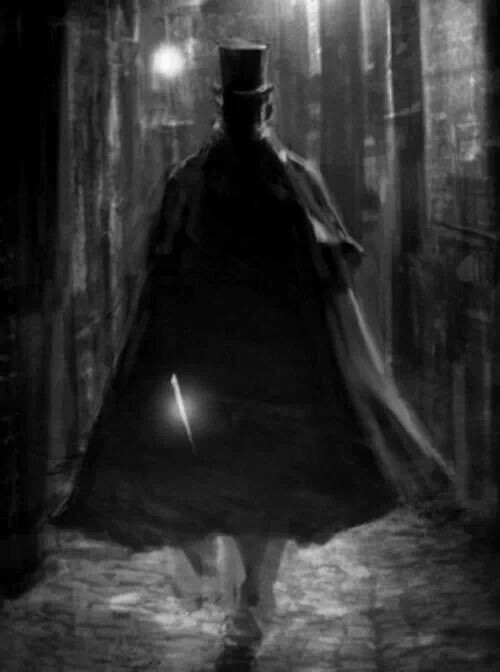

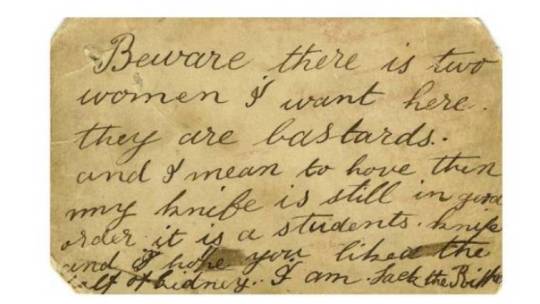
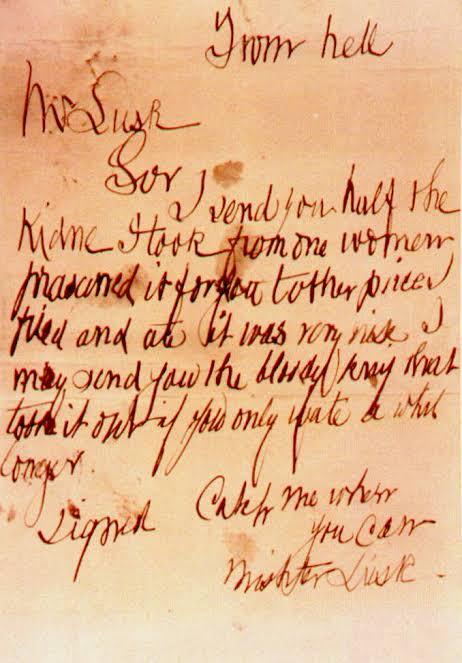
1 note
·
View note
Note
did the authorities got any close lead to who Jack the Ripper and the Zodiac Killer was? thanks
Authorities garnered over a hundred suspects for Jack the Ripper but they all led to dead ends. Here are some of their strongest persons of interest, many of which were dismissed:
Montague John Druitt - He worked as an assistant schoolmaster at a boarding school and barrister until his dismissal in November 1988. It’s unknown why he was dismissed, but shortly after, he had committed suicide by drowning. This sparked suspicion, as his death coincided with the murder of the Ripper’s last and final (that we know of) victim. However, he had an alibi for the first canonical murder. He was playing cricket, so that immediately dismisses him as a suspect.
Seweryn Kłosowski - He emigrated to the UK shortly before the Ripper killings and had poisoned three of his wives. At the time of the murders, he was living in Whitechapel, London, where he worked under an alias. In fact he used a lot of aliases. He was widely suspected of being the culrpit because he lived locally and he obviously killed people before, but since it’s rare for a serial killer to make such a drastic change in their M.O., many experts have their doubts.
John Pizer - Another strong suspect of the murders. He fit the criteria, since he already had committed a stabbing offense before and was thought to have assaulted many prostitutes in the past. He was nicknamed the ‘’Leather Apron’’ by locals, which was quickly picked up by the press, and that’s when police honed in on him as a suspect. He was even arrested after the murders of Mary Ann Nichols and Annie Chapman despite there not being any evidence against him whatsoever. He was eventually released because he had alibis for two of canonical murders (which a police officer confirmed).
One of the strongest suspects of the Zodiac Killer was that of Arthur Leigh Allen. Over the course of two decades he was subjected to several search warrants. He first caught authorities’ attention when he was reported as being within the vicinity of Lake Beryessa on September 27, 1969, where two attacks were launched by the killer. He claimed to have been scuba diving on the day of the attacks. A friend brought him up to police again after hearing Arthur express his desire to kill people, even adapting the moniker ‘’Zodiac’’. He had a history of sexual misconduct against children. During one of the searches of his house, police recovered the same typewriter brand that the Zodiac Killer used to type up his letters that he sent to police. They also owned a Zodiac watch and worked just minutes from where one of the killings took place. Arthur’s DNA was collected and compared to the saliva DNA on the envelope but a match wasn’t made. A handwriting expert who analyzed Arthur’s and the Zodiac Killer’s writing stated that they were nothing alike.
26 notes
·
View notes
Text
Top 10 nhân vật Marvel phù hợp cho những bộ phim kinh dị
Cho dù đã qua Haloween, nhưng nhiều người vẫn xoành xoạch mong muốn được xem nhiều bộ phim kinh dị để thỏa mãn "cơn nghiện" của mình. Đôi khi, họ cũng chỉ cần một đôi khung truyện tranh - nơi luôn hấp thụ cảm hứng từ các nhân vật trong phim - cũng đủ để khiến tim đập lên xuống .
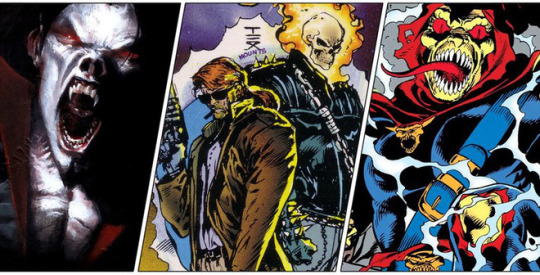
Một số cốt truyện đã trở thành tượng đài như Tomb of Dracula (1972-1979), Sandman (1989-1996), hay From Hell (1989-1992) thường được trổi do những nhân vật chính nức tiếng, và Marvel không hề thiếu những người "đo ni đóng giày" cho những vai đáng sợ như vậy.
10. Morbius

tất nhiên chẳng thể thiếu được tên ma cà rồng Morbius trong một danh sách những nhân vật kinh dị - hắn vốn được tạo ra nhờ những bộ phim và câu truyện về loài quỷ của bóng đêm. Thậm chí, Morbius chỉ được xuất hiện sau khi bộ luật Comics Code được nới lỏng về những nhân vật kinh dị trong truyện tranh, khiến cho Marvel ngay tức thì đặt bút vẽ Morbius và những nhân vật khác như Werewolf-by-Night.
Sắp tới, Sony sẽ đưa nhân vật này vào màn bạc, với sự hiện diện của Jared Leto, tuy chưa có một hướng đi rõ ràng rằng nó sẽ như Venom - nhiều hành động - năng mạnh hơn về xu hướng kinh dị kinh điển.
9. Arcade
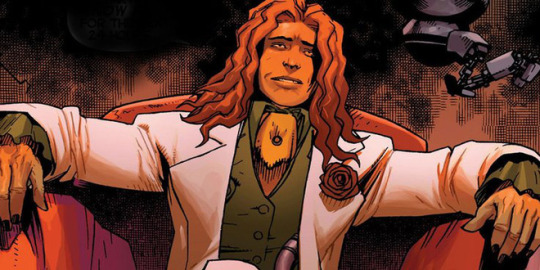
Series phim "Saw" đã tạo ra một làn sóng fan về những cái chết ghê tởm và ghê rợn nhờ những chiếc bẫy duyệt y tám bộ phim, với một phần nữa sắp được công chiếu. Marvel cũng có phiên bản của riêng mình về kẻ giết người Jigsaw, với một nét đặc biệt tứ tung tàn ác khiến Arcade hơn hẳn các tên giết người khác.
Arcade là một tên lính đánh thuê / sát thủ, thường "mướn nghề" của mình cho ai đấu giá cao nhất. Một trong những nhân tài của hắn là tạo ra các bẫy chết người mà hắn đặt cho cái tên một cách thân thương là Murderworld - một trong những cách để chống lại những người anh hùng khác. Arcade hầu như dốc hết niềm say mê của mình cho Murderworld, khiến hắn trở nên một cái tên phải dè chừng khi nhắc đến
8. Ghost Rider

cỗi nguồn của Ghost Rider được rút ra từ những câu chuyện Faustian kinh điển về một người đánh đổi vong hồn mình với quỷ dữ, vì vậy anh hoàn toàn phù hợp trong danh sách này. chẳng những vậy, ngoại hình, khả năng và mối liên kết về mã tà cho thấy anh cũng là một "biến thể" của loại thể kinh dị cơ bản.
Tuy nhiên, điểm đích thực nổi bật về cốt truyện của anh là khi những sự liên kết về đạo lẫn thiên đàng / địa ngục cho thấy rõ ý nghĩa của sự kinh dị - những thứ mà Ghost Rider phải trải qua khi kí hiệp đồng với quỷ dữ. Các fan đều rất mong muốn được nhìn thấy phiên bản Ghost Rider của Danny Ketch và Johnny Blaze (ở thể người thật) được kết hợp với nhau vì họ được coi là những Ghost Rider hay nhất tới giờ.
7. Man-Thing
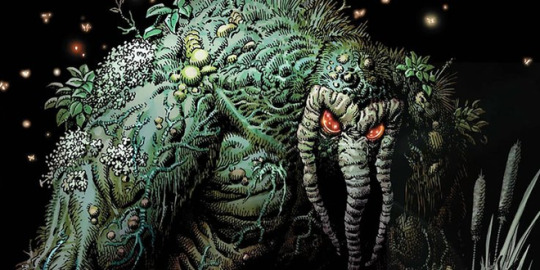
Trong lúc nạm giấu công thức đi��u chế một loại huyết thanh khỏi các tên khủng bố, tấn sĩ Ted Sallis đã bị tai nạn và đâm xuống một đầm lầy. Nơi đây, nhờ yêu thuật của màng lưới thực tiễn (Nexus of Realities), anh bị đột biến gien và trở nên con quái vật kinh dị, được biết đến với cái tên Man-Thing
Man-Thing di chuyển chậm, sức mạnh khỏe hơn người, cùng với khả năng ngoại cảm (nó có thể "cảm giác" được nỗi sợ của một ai đó và thiêu đốt họ bằng axit tiết ra từ tay mình), khiến cho nhân vật này hoàn toàn ăn nhập cho một bộ phim hạng A hoặc một TV show kinh dị. Có vẻ sau bộ phim ngắn được phát hành vào năm 2005 bị đánh giá thảm hại, Marvel vẫn đang cân nhắc cho việc đưa Man-Thing trên màn bạc.
6. Mr. Sinister

Các X-Men phải ứng phó với hàng loạt kẻ xấu đáng sợ trong nhiều năm qua, nhưng phù hợp nhất cho một bộ phim kinh dị có nhẽ chỉ có Mr. Sinister - một người tự biến mình thành "ông ba bị". Mr. Sinister không chỉ có một ngoại hình đáng sợ, nhưng sức mạnh của hắn mới đích thực là điểm sáng.
Những chũm về khoa học của Sinister cùng với sự coi thường mạng sống con người và đạo đức khiến hắn có một vị trí trong danh sách những nhà khoa học điên đáng sợ nhất từng được tạo ra. Sinister thường xuyên biến đổi gien, cùng với các thử nghiệm biến dạng con người kiên cố sẽ là một nhân vật phản diện phù hợp cho các bộ phim của đạo diễn David Cronenberg.
5. Nightmare
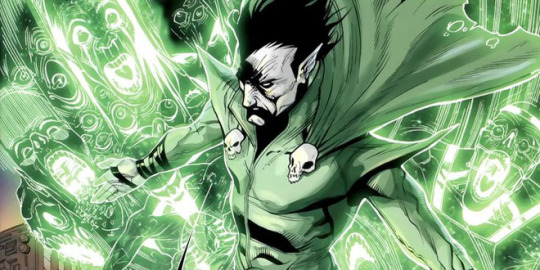
Ngay cái tên của Nightmare - Ác mộng - cũng đủ để thấy được vị thế của hắn trong giới kinh dị. Là chúa tể của những nỗi sợ, Nightmare được biết đến như Freddy Krueger của Marvel - hắn sẽ bước vào các giấc mơ tươi đẹp của bạn và bóp méo nó trở nên những thứ sợ nhất mà bạn từng mê.
Là người trị vì của Chiều không gian Giấc mơ, Nightmare có thể đi xuyên các giấc mơ của các nạn nhân xấu số, điều khiển chúng theo ý muốn của mình. Nhưng nhờ có ma thuật của Doctor Strange, hầu như mọi cầm tiến công trong Chiều Giấc mơ của Nightmare đều không thành.
4. The Brood

Bộ phim lừng danh Alien năm 1979 cho thấy rằng: "trong vũ trụ, sẽ không có ai nghe thấy tiếng thét của bạn", song song cũng là một bài học rút ra cho các X-Men khi họ tiến vào ổ của The Brood. The Brood là những sinh vật ngoài hành tinh dạng sâu bọ, chuyển di xung quanh vũ trụ trong những quái vật giống cá voi mang tên Acanti mà chúng điều khiển bằng virus Slaver.
The Brood cũng giống như Xenomorphs của Alien, luôn luôn tìm vật chủ để cấy những quả trứng mang gien của chúng vào. Nếu không có sự cản trở của X-Men, có lẽ địa cầu đã biến thành một ổ Brood từ rất lâu rồi.
3. Man-Wolf
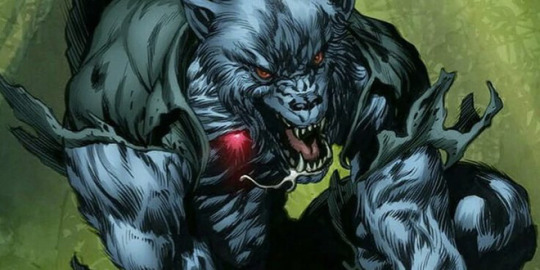
Ma sói cũng là một trong những nhân vật kinh điển của giới kinh dị, từ thời Lon Charney Jr trong bộ phim The Wolf Man được công chiếu vào năm 1941. Vũ trụ Marvel cũng có một vài nhân vật mang trong mình dòng máu nửa người nửa sói (như Werewolf-by-Night được nhắc ở trên), nhưng trổi hơn cả chắc vẫn là Man-Wolf - một lựa chọn hợp lý hơn cho truyện tranh kinh dị.
John Jameson đã tự tạo cho mình một chiếc vòng cổ từ một hòn đá quý phát hiện được trên mặt trăng - vật mà đã mang lại lời nguyền hóa sói cho nhân vật bất hạnh này mỗi khi trăng tròn (cho dù sau này anh đã bật lửa khò xì gà tiến hóa trở thành một Stargod). vì sao cốt truyện quyến rũ này vẫn chưa được Marvel khẩn hoang cho một bộ phim ?
2. Demogoblin

xì gà cuba nổi tiếng h="368" alt="Top 10 nhân vật Marvel hiệp cho những bộ phim kinh dị - Ảnh 10." title="Top 10 nhân vật Marvel hiệp cho những bộ phim kinh dị - Ảnh 10." photoid="bb0050a0-005d-11ea-9ea3-37e9fb1c7a0a" type="photo" style="max-width:100%;" width="" height="">
Không chỉ Ghost Rider là người độc nhất đã kí một hiệp đồng với quỷ, Jason Macendale cũng đã có một bài học đắt giá khi anh trở thành Hobogoblin "nhờ" công của quỷ N'astirh trong sự kiện Inferno (anh bị kết hồn với một con quỷ không tên, một quyết định mà anh rất hối hận).
Macendale chung cục cũng trừ tà con quỷ của mình, khiến nó trở thành một sinh vật mang tên Demogoblin và tiếp tục ám lấy anh và cả Spider-Man. Demogoblin lướt trên một tấm ván làm từ lửa và sở hữu nhiều tà thuật - một tỉ dụ cho biến thể đặc biệt cho một câu chuyện Faustian kinh điển khác.
1. Skinless Man
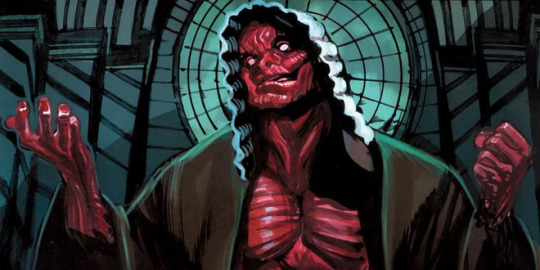
Weapon Plus là một tổ chức chính phủ dùng để tạo ra các siêu chiến binh như Captain America, Wolverine, Deadpool và Fantomex. Tuy nhiên, chương trình này không có ít thất bại, điển hình như Harry Pizer - thuộc dự án mang tên Weapon III.
Khả năng đặc biệt của Pizer đến từ làn da siêu mẫn cảm được tăng cường hóa bởi chương trình Weapon Plus cho các nhiệm vụ điệp báo trong thời kì Chiến tranh lạnh. Pizer sau này tuy bị... lột da trong lúc bị tra tấn, nhưng điều này khiến hắn có thể điều khiển cơ bắp của mình ở mức phân tử - một nhân vật đáng sợ kể cả về sức mạnh lẫn ngoại hình.
Theo CBR
10 lý do chứng minh sức mạnh thất kinh của Carnage, nhân vật phản diện sẽ khiến Spider-Man PHẢI bắt tay hiệp tác với Venom
Theo Trí Thức Trẻ
Link bài gốc Copy link
0 notes
Text
TAGGED BY: @vamytas ! thank you for the tag. . . i love talking about characters.
CURRENTLY PLAYING: too many TOO MANY but let me introduce you the ones i’m more or less active on right now. . . i’ve got more but most of them are old. starting with wod !
MIO LUCA SCORTESE PUTANESCA ( aggressive giovanni ghoul who is a lot more bark than he’s bite. also owns a dog. or used to own one. )
SAMUEL DOUGAN ( obvs dougan who’s 2 hip 2 b square or something. . . and pays a lot of attention to his looks. i mean he should as a proper yuppie. survives by all means necessary which i guess you gotta if you want to survivve as a sabbat ghoul. . . also has a pierced nipple jfyi )
STANLEY PIZER alias LARRY HARVEY ( my first vtm character i think. . . named himself after multiple real people from history which is so inconspicuous. . . nosferatu ancilla who is strongly disconnected from the nosferatu clan in general and rather sticks to a certain ventrue’s heel . . . hates kent for siring his EX WIFE )
NAUGHTY DOG ( fallout headhuntress. . . doesn't at all get the attention she deserves, is extremely trigger-happy and has a really hardcore zero tolerance policy for bullshit going on )
FOLK J. CARPENTER ( CANADIAN COWBOY from around 1850. . . or something like that because i haven’t really decided yet. surprisingly softspoken and all around a bit of a. . . misfit ? even though he was intended to be your standard cool cowboy. . . but i just can’t do cool. )
RAZ ( dystopian scifi conman. . . or maybe just conman. . . and scifi idk. wanted him to be suave and smooth but ended up being the most antisocial character i’ve got lmao. . . he’s so. . . hostile. but i love conmen tbh. initially star wars based ! )
RAYLAN HEYES ( an. . . ARTIST with a punk rock history who started off being his riot girrrl’s groupie after moving from mississippi to new york. now he’s back and he hates america even more than i do. if ray was vtm he’d probably be a toreador. )
WANT TO / WILL BE PLAYING:
LAVELLE DELARGE ( i talked about him in dougan’s little drabble about his domitor’s pack. . . i had so much fun writing him i might as well play him. . . or introduce him as an npc with more in-depth story. . . i mean look at him that’s art )
HAVE PLAYED:
( CANON ) the riddler ( batman. . . listen... i love eddie. i luv. i love riddles too ) ; the batman ( batman. . . for like, five seconds ) ; michael kaufmann ( silent hill 1 & silent hill shattered memories. . . harvey keitel fc. . . probably the most fun i’ve had with any canon character, ever. . . dank psychology and some hardocre cynicism. . . he was basically a drug-pusher in the first game and a therapist in the new one. . . i combined both and threw some of the town cult into it because he was a member in the first. . . ) ; john constantine ( hellblazer & movie. . . mostly movie based tho because i didn’t read much of the comics back then. . . get a load of that keanu ) ; paul denton ( deus ex game. . . mostly bc rollin’s had a jc denton. . . and i love brothers. . . paul died in our playthrough btw we thought he had too bc the game was so old ) ; richie gecko ( from dusk till dawn movie. . . AGAIN bc brothers and this means i used quentin as a fc i can’t believe it ) ; franky four fingers ( snatch movie. listen. i know this movie isn’t perfect but i love benicio del toro and the movie was great and he was so handsome and i love gambling characters ok. . . )
( OC ) now listen up i love ocs more than anything which means i’ve got a whole menagerie of them. . . but i’ll try to keep it simple omf. so i’ll only mention the wod characters i remember from here. . . they didn’t survive for very long but they are somewhere in my heart. new and improved hopefully.
lester cosgrove ( tzimisce anchilla who sired his sister who literally surpassed him within like a year in everything sabbat and rank related. . . who then sired her son to upset her but only got himself a new annoying childe. . . also lowkey still stuck somewhere in 1750 or sth. . . i based him on ‘weird science’ from oingo boingo so u get the idea lmao ) ; ??? ( brujah anti bc his gf was sabbat. . . nowadays i’d prolly go for toreador bc look at that boy. . . all these old characters wow ) ; darcy ??? ( VENTRUE OF COURSE. . . kent’s rival tbh. . . he was prince of lancashire and perfectly unfit for diplomacy. . . but he didn’t have to be apt at it. . . he’d just vote to behead you but he was a total embarrassment, social skill equaling zero. also hates kent for leading his soon-to-be-wife astray and siring her IN HIS DOMAIN. he then had her killed but unfortunately kent got away 2 bad. )
WILL / WOULD PLAY AGAIN: ??? maybe one of my old ocs. not any canons. . . might re-introduce some older character as npcs for my current / new ones !
#LINKS are for pictures and blog links... it pays to look at the pictures TRUST ME#anyways thank a ton for the tag this was super fun to do... i have CHARACTERS aplenty...#your pam and my eddie coulda been besties.... idk think about it#as you can see rollins and i usually make characters that have somethign to do with each other...#anyways a wall of text for everyone's readingpleasure#/// long post#/// image links
5 notes
·
View notes
Photo






“Dark” Annie Chapman
[Previous post]
Last days and murder
Annie was 5’ tall (152 cm), aged 47 at time of her murder, with pallid complexion, blue eyes, dark brown wavy hair, excellent teeth (possibly two missing in lower jaw). She was strongly built (stout) and with a thick nose. She was under-nourished and suffering from a chronic disease of the lungs (tuberculosis) and brain tissue. It is said that she was dying (these could also be symptoms of syphilis). Her friend Amelia Palmer described her as “sober, steady going woman who seldom took any drink.” She was, however, known to have a taste for rum.
On Saturday, September 1, 1888, Edward Stanley returned after having been away since August 6. He met Annie at the corner of Brushfield Street. Sometime close to this date, Annie had a fight with Eliza Cooper. The fight has several different tellings but all revolve around Edward Stanley. An argument broke out in the Britannia Public House between Eliza Cooper and Annie. Also present were Stanley and Harry the Hawker. Cooper was Annie’s rival for the affections of Stanley. Cooper struck her, giving her a black eye and bruising her breast. The cause was given as: Chapman noticed Cooper palming a florin belonging to Harry, who was drunk, and replacing it with a penny. Chapman mentions this to Harry and otherwise calls attention to Cooper’s deceit. Cooper said she struck Annie in the pub on September 2nd. Amelia Palmer said that Annie told her the argument took place at the pub but the fisticuffs took place at the lodging house, later. John Evans, night watchman at the lodging house said the fight broke out in the lodging house on September 6th. Cooper also said that the fight was not over Harry but over soap which Annie had borrowed for the Pensioner and not returned. In one version of the story, Annie is to have thrown a half penny at Cooper and slapped her in the face saying “Think yourself lucky I did not do more.” Donovan stated that on August 30th he noticed she had a black eye. “Tim, this is lovely, aint it.” She was to have said to him. Stanley noticed that she had a black eye on the evening of September 2nd and on the 3rd Annie showed her bruises to Amelia Palmer. Donovan will tell the inquest into her death that she was not at the lodging house during the week prior to her death. So it appears from the bulk of the evidence that the fight took place in the last few days of August and probably in the lodging house.
On Monday, September 3, Annie met Amelia Palmer in Dorset Street. “How did you get that?” asked Palmer, noticing the bruise on her right temple. By way of answer, Annie opened her dress. “Yes,” Annie said “look at my chest.” Annie complained of feeling unwell and said she may go see her sister. “If I can get a pair of boots from my sister,” she said “I may go hop picking.”
The following day, Tuesday, September 4, Amelia Palmer saw Annie again near Christ Church. Chapman again complained she was feeling ill and said she may go the casual ward for a day or two. She said she has had nothing to eat or drink all day. Palmer gave her 2d for tea, and warned her not to spend it on rum.
On the night of Wednesday September 5 to Thursday, September 6th, she was possibly in the casual ward although there are no records to support the assumption. However, following her murder, Donovan found a bottle of medicine in her room.
On Friday, September 7, at around 2:00-3:00 PM Crossingham’s house deputy, Timothy Donovan, permitted Annie to sit in the kitchen, asking where she had been all week. “In the infirmary,“ answered Annie. At 5:00 PM Amelia Palmer saw Annie in Dorset Street. Chapman was sober and Palmer asked her if she was going to Stratford, but Annie said she was too ill to do anything. Farmer left but returned a few minutes later only to find Chapman not having moved. Annie said ”I must pull myself together and go out and get some money or I shall have no lodgings.“ At 11:30 PM Annie returned to the lodging house and asked permission to go into the kitchen.
At 12:10 AM of Saturday, September 8th, Frederick Stevens, also a lodger at Crossingham’s said he drank a pint of beer with Annie. He states that she did not leave the lodging house until 1:00 AM. At 12:12 AM printer William Stevens, another lodger, entered the kitchen and saw Chapman. She said that she had been to Vauxhall to see her sister, that she went to get some money and that her family had given her 5 pence. Annie said she had been to the hospital and would go to the infirmary the next day. She had a bottle of lotion and a bottle of medicine. She took out a box of pills from her pocket, and, upon handling it, the box broke. Annie placed the pills in a torn piece of envelope she found on the floor near the fireplace. Chapman left the kitchen, Stevens thought she had gone to bed.
At 12:30am Frederick Simmons, a fellow lodger, and Annie had a beer. Half an hour later, at 1:00am, Simmons saw Annie leave Crossingham's (#35 Dorset St), believing she went to the Brittannia pub, (located on the north-west corner of Dorset St and Commercial St).
At 1:35 AM Annie returned to the lodging house again. She ate a baked potato. John Evans, the night watchman, had been sent to collect her bed money. She went upstairs to see Timothy Donovan in his office. “I haven’t sufficient money for my bed,” she told him, “but don’t let it. I shall not be long before I’m in.” Donovan chastised her, “You can find money for your beer and you can’t find money for your bed.” Annie was not dismayed. She stepped out of the office and stood in the doorway for two or three minutes. “Never mind, Tim.” she stated, “I’ll soon be back.”And to Evans she said, “I won’t be long, Brummy [his nickname]. See that Tim keeps the bed for me.” Her regular bed in the lodging house was number 29. Evans saw her leave and enter Little Paternoster Row going in the direction of Brushfield Street and then turning towards Spitalfields Market.
At 2:30am Emily Walter was in the backyard of 29 Hanbury Street with a man. He was 37; Dark beard and moustache; foreign accent; dark vest and pants; black scarf and felt hat; short dark jacket. Hanbury St curves south-east from Commercial St to the junction of Baker’s Row and Old Montague St. #29 was on the North side of the street, between Wilkes St & Brick Ln. 27 Hanbury St was next door on the West side of #29. 29 Hanbury St, was a 3-story building with residents living on each of the three floors and in the attic with a small business on the ground floor and one working out of the cellar. On the left-hand side of the buildings’ front was two doors: the door on the right led to the shop. The door on the left opened to a passageway containing stairs to the residences and another door leading to the backyard.
#29 was owned by Mrs Amelia Richardson, who ran a packing case business out of the cellar and was assisted by Francis Tyler and her son, John Richardson. A cat’s meat shop was in the ground floor front room and was used by Mrs Harriet Hardyman and her 16 year old son. The ground floor back room was a kitchen. Mrs Richardson and her 14 year old grandson slept in the first floor front room. The first floor back room was occupied by Mr Waker and his adult, retarded son. Mr Thompson, his wife, and their adopted daughter slept in the second floor front room. Two unmarried sisters, Misses Copsey, lived in the second floor back room. Living in the front room of the attic was John Davis with his wife and three sons, and occupying the attic’s back room was Mrs Sarah Cox. The passageway was sometimes occupied by unknown people at unusual hours, and the backyard was frequented by prostitutes. The door to the street was a latch-type, and the door to the yard was self-closing or swing-door. Typically, neither door was locked as a courtesy to the residents.
Three small stone steps led to the yard, which was about 14’ x 12’. The yard was part dirt and part paving stone. About 3’ to 3’-6”, left of the doorway, was a 5’-6" high fence made of wooden pailings, separating the yards of #27 & #29. To the right of the doorway, were cellar doors, which led to a workshop. Two feet away, on the right, was a water pump. At the yard’s far left corner was a storage shed, and at the far right corner was a privy.
At 3:00am Davis woke up. Around 3:50am Thompson left for work without going into the back yard. Mrs Richardson, dozing fitfully, heard him pass her room and called out, “Good morning.”
At 4:45 AM Mr. John Richardson entered the backyard of 29 Hanbury St. on his way to work, and sat down on the steps to remove a piece of leather which was protruding from his boot. Although it was quite dark at the time, he was sitting no more than a yard away from where the head of Annie Chapman would have been had she already been killed. He later testified to have seen nothing of extraordinary nature. He left 5 minutes later. At 4:51am dawn broke. At 5:25am the sun rose.
At 5:30 AM, Elizabeth Long saw Chapman with a man, hard against the shutters of 29 Hanbury Street. They are talking. Long heard the man say “Will you?” and Annie replied “Yes.” Long was certain of the time as she had heard the clock on the Black Eagle Brewery, Brick Lane, strike the half hour just as she had turned onto the street. Chapman had her back towards Spitalfields Market and, thus, her face towards Long. The man had his back towards Long. A few moments after the Long sighting, Albert Cadosch, a young carpenter living at 27 Hanbury Street walked into his back yard probably to use the outhouse. Passing the five foot tall wooden fence which separates his yard from that of number 29, he heard voices quite close. The only word he could make out was a woman saying “No!” He then heard something falling against the fence.
Discovery
At 5:45am Davis and his wife got out of bed as the Spitalfields Church clock struck the quarter hour. They had some tea. Ten minutes later, Davis went downstairs, noticing that the passageway door to the street stood wide open, which was not unusual. Davis then opened the other door to enter the backyard and saw Annie’s body, then an unidentified woman.
Annie was lying on her back, parallel with the fence, which was to her left; Her head was about 2’ from the back wall and 6"-9" left of the bottom step; Her legs were bent at the knees; Her feet were flat on the ground, pointing toward the shed; Her dress was pushed above her knees; Her left arm lay across her left breast; Her right arm at her side; The small intestines, still attached by a cord, and part of the abdomen lay above her right shoulder; 2 flaps of skin from the lower abdomen lay in a large quantity of blood above the left shoulder; Her throat was deeply cut in a jagged manner; A neckerchief was around her neck.
Davis immediately left the yard and ran out into the street. James Kent and James Green were standing outside their workshop at 23A Hanbury St, waiting for their fellow workers to arrive when Davis entered the street. “Men! Come here! Here’s a sight. A woman must have been murdered!” shouted Davis to Green and Kent. Henry John Holland was passing by and followed the others to the yard. Only Holland ventured into the yard. All of them then left: Green, apparently, returned to work; Kent did not notice a constable in the area, so he went to his workshop for a brandy while looking for a canvas to put over the body; Holland went to the Spitalfields Market, where he found a constable who was on a fixed point; and, Davis went to the Commercial Street Police Station, to report the finding.
Mrs Hardyman woke up to the sound of Davis and the others in the passageway and sent her son to see what was going on. Upon his return, he said, “Don’t upset yourself, mother. It’s a woman been killed in the yard.” Around 6:10am Mrs Richardson went into the passageway after receiving news from her grandson. (Only Annie’s body was in the yard.)
Investigation
Inspector Joseph Luniss Chandler was at the corner of Hanbury St and Commercial St when he saw several men running from Hanbury St. “Another woman has been murdered,” he was told. Some 3 minutes later Insp Chandler arrived at the scene. (A crowd had already begun to gather in the passageway, but no one was in the yard.) He sent for the Divisional Surgeon, Doctor George Bagster Phillips, 2 Spital Square; he sent for an ambulance and reinforcements from the Commercial Street Police Station; he notified Scotland Yard and covered the body with sacking he borrowed from a neighbouring resident. Kent returned to #29 and found that Insp Chandler had taken possession of the backyard and that a crowd had gathered in the passageway near the door. Other constables arrived, and the passageway was cleared. At 6:20am Dr Phillips learned of the body, and arrived upon the scene and began his initial examination 10 minutes later.
Dr. Phillips described the body of Annie Chapman as he saw it at 6:30 AM in the back yard of the house at 29 Hanbury Street. According to him, she was murdered around 4:30am. This is inquest testimony: “The left arm was placed across the left breast. The legs were drawn up, the feet resting on the ground, and the knees turned outwards. The face was swollen and turned on the right side… The tongue was evidently much swollen. The front teeth were perfect as far as the first molar, top and bottom and very fine teeth they were. The body was terribly mutilated…the stiffness of the limbs was not marked, but was evidently commencing… the throat was dissevered deeply; the incision through the skin were jagged and reached right round the neck…On the wooden paling between the yard in question and the next, smears of blood, corresponding to where the head of the deceased lay, were to be seen. These were about 14 inches from the ground, and immediately above the part where the blood from the neck lay… the instrument used at the throat and abdomen was the same. It must have been a very sharp knife with a thin narrow blade, and must have been at least 6 in. to 8 in. in length, probably longer… the injuries could not have been inflicted by a bayonet or a sword bayonet. They could have been done by such an instrument as a medical man used for post-mortem purposes, but the ordinary surgical cases might not contain such an instrument. Those used by the slaughtermen, well ground down, might have caused them… the knives used by those in the leather trade would not be long enough in the blade. There were indications of anatomical knowledge… the deceased had been dead at least two hours, and probably more; but it was right to mention that it was a fairly cool morning, and that the body would be more apt to cool rapidly from its having lost a great quantity of blood. There was no evidence…of a struggle having taken place… the deceased entered the yard alive… A handkerchief was round the throat of the deceased… it was not tied on after the throat was cut.”
Around.6:40am the ambulance had arrived and Dr Phillips ordered the body to be taken to the Whitechapel Workhouse Infirmary Mortuary in Eagle St off of Old Montague St. As the body was being removed, the contents of Annie’s pocket, which had been cut, were discovered at her feet: A folded piece of coarse muslin, a comb, and a pocket hair comb in a case. (Dr Phillips felt the items were arranged/placed.) Dr Phillips and Insp Chandler then searched the area, finding an envelope piece with the Royal Sussex Regiment crest, the letter “M” in a man’s handwriting, letters “SP,” the number “2,” and the postmark “London, 23 August, 1888” containing the 2 pills laying by her head; A wet leather apron drying on the water tap 2’ from the body; A basin of clean water resting beneath the water tap; 6 spots of blood on the back wall, near where Annie’s head had lain, were located about 18" off the ground and ranged in size from that of six pence to that of a pin point; About 14" off the ground, near the position of Annie’s head, were clotted patches and smears of blood on the pailings of the still-intact fence; No blood stains were found in the passageway, in the rest of the house, in the street, or in the adjoining yards; An empty nail box and a piece of flat steel were found in the yard.
News of the murder had spread, and Sergeant Edward Badham was met by several hundred people as he conveyed the body to the mortuary. Around 7:00am, Sergeant William Thick, Sergeant Leach, and other detectives arrived at Hanbury St. Insp Frederick Abberline was informed of the murder by telegram. At 7:00am Robert Mann received Annie’s body at the mortuary. Around 7:02am Insp Chandler arrived at the mortuary. The body was still on the ambulance, and he took a description of Annie’s clothing. Insp Chandler then left the mortuary, leaving Police Constable Barnes in charge of the body. At 7:10am Sgt Thick arrived at the mortuary and took Annie’s description. Around 7:30am Simmons was taken to the mortuary and immediately recognized Annie, noting that she had on 3 rings when she left the lodging house. Later in the morning Donovan identified the body as Annie Siffey.
It wasn’t until 10:00am that Amelia Palmer read the description of the latest murder victim in the newspaper. She went to a police station, believing she knew the murdered woman. One hour and a half later, she was taken to the mortuary and identified the body as Annie Chapman, (aka Dark Annie). That day, Emmanuel Delbast Violenia of Hanbury St informed police that he had witnessed a man and a woman quarrelling early that morning, and that the man had threatened to stick the woman with a knife. In the afternoon Holland went to the Commercial Street Police Station to report the conduct of the officer at the Spitalfields Market, whom he informed of the murder.
Around 2:00pm Dr Phillips arrived at the mortuary to conduct the post-mortem and found that the body had already been stripped, partially washed, and laid on the table waiting for him. The clothes were tossed into a corner except for the neckerchief which was still around the neck. (The Clerk to the Parish Guardians ordered two nurses, Mary Simonds and Francis Wright, to lay out the body. This was done without police consent.)
Report following the post mortem examination:“…There was a bruise over the right temple. On the upper eyelid there was a bruise, and there were two distinct bruises, each the size of a man’s thumb, on the forepart of the top of the chest. The stiffness of the limbs was now well marked. There was a bruise over the middle part of the bone of the right hand. There was an old scar on the left of the frontal bone. The stiffness was more noticeable on the left side, especially in the fingers, which were partly closed. There was an abrasion over the ring finger, with distinct markings of a ring or rings. The throat had been severed as before described. the incisions into the skin indicated that they had been made from the left side of the neck. There were two distinct clean cuts on the left side of the spine. They were parallel with each other and separated by about half an inch. The muscular structures appeared as though an attempt had made to separate the bones of the neck. There were various other mutilations to the body,… that they occurred subsequent to the death of the woman, and to the large escape of blood from the division of the neck.
The deceased was far advanced in disease of the lungs and membranes of the brain, but they had nothing to do with the cause of death. The stomach contained little food, but there was not any sign of fluid. There was no appearance of the deceased having taken alcohol, but there were signs of great deprivation… she had been badly fed… The injuries were certainly not self-inflicted. The bruises on the face were evidently recent, especially about the chin and side of the jaw, but the bruises in front of the chest and temple were of longer standing - probably of days… the person who cut the deceased throat took hold of her by the chin, and then commenced the incision from left to right… it was highly probable that a person could call out, but with regard to an idea that she might have been gagged he could only point to the swollen face and the protruding tongue, both of which were signs of suffocation.
The abdomen had been entirely laid open: the intestines, severed from their mesenteric attachments, had been lifted out of the body and placed on the shoulder of the corpse; whilst from the pelvis, the uterus and its appendages with the upper portion of the vagina and the posterior two thirds of the bladder, had been entirely removed. No trace of these parts could be found and the incisions were cleanly cut, avoiding the rectum, and dividing the vagina low enough to avoid injury to the cervix uteri. Obviously the work was that of an expert- of one, at least, who had such knowledge of anatomical or pathological examinations as to be enabled to secure the pelvic organs with one sweep of the knife, which must therefore must have at least 5 or 6 inches in length, probably more… the instrument, like the one which divided the neck, had been of a very sharp character. The mode in which the knife had been used seemed to indicate great anatomical knowledge.
He… himself could not have performed all the injuries he described, even without a struggle, under a quarter of an hour. If he had down it in a deliberate way such as would fall to the duties of a surgeon it probably would have taken him the best part of an hour.”
About 2:30pm Edward Stanley, having heard from a shoeblack that Annie had been murdered, turned up at Crossingham’s. Upon verification of the story, he left without another word. That night Albert Cadosch informed the police of what he knew after he returned from work.
The following day, Sunday September 9th, Annie’s brother, Fountain Hamilton Smith, identified the body as that of his sister. On Monday September 10th, c8:00am John Pizer was taken into custody at his Mulberry St home by Sgt Thick and several other officers. “You are just the man I want,” said Sgt Thick, who thought Pizer and “Leather Apron” (and the murderer) were all the same person. “Mother, he has got me,” replied Pizer. Pizer was then taken to the Leman Street Police Station. That same day, at 10:00am it was the first day of the Chapman inquest, conducted by Coroner Wynne Edwin Baxter at the Working Lad’s Institute. The jury viewed the corpse at the mortuary in Montague St. The inquest adjourned until Wednesday, September 12th.
The following day, Tuesday September 11th, at 1:00pm Emmanuel Delbast Violenia was taken to the Leman Street Police Station to view a line-up of twelve, predominantly Jewish, men. From which, he “unhesitatingly identified” Pizer as Leather Apron and as the man he had seen quarrelling with a woman on the morning of Annie’s death, but at 8:00pm Violenia was reprimanded for wasting the police’s time when, after 3 hours of continued questioning, Violenia contradicted himself “over and over again” and seemed too anxious to view the corpse, convincing the police that Violenia had fabricated the story in order to see the body.
Around c.9:30pm Pizer was released from Custody. On Wednesday September 12th, Mrs Long made her statement to the police and identified Annie’s body as the woman she had seen. The inquest was resumed on its thirds day on September 13th.
Annie Chapman was buried on Friday, 14 September, 1888. At 7:00am, a hearse, supplied by a Hanbury Street Undertaker, H. Smith, went to the Whitechapel Mortuary. Annie’s body was placed in a black-draped elm coffin and was then driven to Harry Hawes, a Spitalfields Undertaker who arranged the funeral, at 19 Hunt Street. At 9:00am, the hearse (without mourning coaches) took Annie’s body to City of London Cemetery (Little Ilford) at Manor Park Cemetery, Sebert Road, Forest Gate, London, E12, where she was buried at (public) grave 78, square 148. Annie’s relatives, who paid for the funeral, met the hearse at the cemetery, and, by request, kept the funeral a secret and were the only ones to attend. The black-covered elm coffin bore the words “Annie Chapman, died Sept. 8, 1888, aged 48 years.”
On September 19th it took place the 4th day of Annie’s inquest. Wednesday September 26th, 1888 was the last day of her inquest. Baxter summarised the case, saying: “…the uterus has been removed. The body has not been dissected, but the injuries have been made by some one who had considerable anatomical skill and knowledge. There are no meaningless cuts. It was done by one who knew where to find what he wanted, what difficulties he would have to contend against, and how he should use his knife, so as to abstract the organ without injury to it. No unskilled person could have known where to find it, or have recognised it when it was found. For instance, no mere slaughterer of animals could have carried out these operations. It must have been some one accustomed to the post-mortem room… I must mention a fact which at the same time proves the assistance which publicity and the newspaper press afford in the detection of crime. Within a few hours of the issue of the morning papers containing a report of the medical evidence given at the last sitting of the Court, I received a communication from an officer of one of our great medical schools, that they had information which might or might not have a distinct bearing on our inquiry. I attended at the first opportunity, and was told by the sub-curator of the Pathological Museum that some months ago an American had called on him, and asked him to procure a number of specimens of the organ that was missing in the deceased. He stated his willingness to give œ20 for each, and explained that his object was to issue an actual specimen with each copy of a publication on which he was then engaged. Although he was told that his wish was impossible to be complied with, he still urged his request. He desired them preserved, not in spirits of wine, the usual medium, but in glycerine, in order to preserve them in a flaccid condition, and he wished them sent to America direct. It is known that this request was repeated to another institution of a similar character. Now, is it not possible that the knowledge of this demand may have incited some abandoned wretch to possess himself of a specimen. It seems beyond belief that such inhuman wickedness could enter into the mind of any man, but unfortunately our criminal annals prove that every crime is possible… His anatomical skill carries him out of the category of a common criminal, for his knowledge could only have been obtained by assisting at post-mortems, or by frequenting the post-mortem room. Thus the class in which search must be made, although a large one, is limited…” A verdict of wilful murder against a person or persons unknown was entered.
Aftermath
On Saturday October 6th, the British Medical Journal published the following report in response to Baxter’s summation: “It is true that enquiries were made at one or two medical schools early last year by a foreign physician, who was “spending some time in London, as to the possibility of securing certain parts of the body for the purpose of scientific investigation.” No large sum, however, was offered. The person in question was a physician of the highest reputability and exceedingly well accredited to this country by the best authorities in his own, and he left London fully 18 months ago. There was never any real foundation for the hypothesis, and the information communicated, which was not at all of the nature the public has been led to believe, was due to the erroneous interpretation by a minor official of a question which he had overheard and to which a negative reply was given. This theory may be dismissed, and is, we believe, no longer entertained by its author.”
Chapman’s grave no longer exists; it has since been buried over.
Photos: Whitechapel Murders Wordpress, Jack the Ripper Tour, Whitechapel Jack & Retrocards
***
To know more:
ACKROYD, Peter et al. (2008): Jack the Ripper and the East End.
ALEXANDER, G. (2015): Jack The Ripper: Case Solved?
BEGG, Paul (2003): Jack the Ripper: The Definitive History.
BEGG, Paul (2013): Jack The Ripper. The Facts.
BEGG, Paul; FIDO, Martin & SKINNER, Keith (1996): The Jack The Ripper A – Z. The Ultimate Guide to the Ripper Mystery.
CHISHOLM, Alexander; DiGRAZIA, Christopher-Michael & YOST, Dave (2002): The News from Whitechapel: Jack the Ripper in the “Daily Telegraph”.
CULLEN, Tom (1965): Autumn of Terror: Jack the Ripper, his crimes and times.
EDDLESTON, John J. (2001): Jack the Ripper: An Encyclopedia.
EVANS, Stewart P. & RUMBELOW, Donald (2006): Jack the Ripper: Scotland Yard Investigates.
EVANS, Stewart P. & SKINNER, Keith (2000): The Ultimate Jack the Ripper Sourcebook: An Illustrated Encyclopedia.
FROST, Rebecca (2018): The Ripper’s Victims in Print. The Rethoric Portrayals Since 1929.
HINTON, Bob (1998): From Hell. Jack the Ripper Mistery.
HODGSON, Peter (2011): Jack the Ripper. Through the Mists of Time.
HUME, Robert (2019): The hidden lives of Jack the Ripper’s victims.
JAKUBOWSKI, Maxim & BRAUND, Nathan (1999): The Mammoth Book of Jack the Ripper.
JONES, Richard (2008): Jack the Ripper. The Casebook.
MAGELLAN, Karyo (2005): By Ear and Eyes: The Witechapel Murders, Jack the Ripper and the Murder of Mary Kelly.
MARRIOTT, Trevor (2005): Jack the Ripper: The 21st Century Investigation.
MATTHEWS, Rupert (2013): Jack the Ripper’s Street of Terror: Life during the reign of Victorian London’s most brutal killer.
PRIESTLEY, Mick P. (2018): One Autumn in Whitechapel.
RANDALL, Anthony J. (2013): Jack the Ripper. Blood lines.
RUBENHOLD, Hallie (2019): The Untold Lives of the Women killed by Jack the Ripper / The Lives of Jack the Ripper’s Women.
RUMBELOW, Donald (1975): Jack The Ripper: The Complete Casebook.
RUMBELOW, Donald (2004): The Complete Jack the Ripper: Fully Revised and Updated.
SHELDEN, Neal E. (2013): Mary Jane Kelly and the Victims of Jack the Ripper: The 125th Anniversary.
SHELDEN STUBBINGS, Neal (2017): The Victims of Jack the Ripper.
SKINNER, Keith & EVANS, Stewart P. (2000): The Ultimate Jack The Ripper Sourcebook.
SUGDEN, Philip (1994, 2002): The Complete History of Jack the Ripper.
TROW, Meirion James (2009): Jack the Ripper: Quest for a Killer.
TROW, Meirion James (2012): Hunting Jack: Abberline and the Whitechapel murders.
WHITEHEAD, Mark; RIVETT, Miriam (2006): Jack the Ripper.
WHITTINGTON-EGAN, Richard (1975, 2015): Jack the Ripper. The definitive Casebook.
WOOD, Simon Daryl (2015): Deconstructing Jack: The Secret History of the Whitechapel Murders.
Wikipedia
Casebook - Annie Chapman
(Wiki) Casebook - Annie Chapman
Casebook - Annie Chapman’s timeline
Casebook - Annie Chapman’s inquest transcription
Casebook - Annie Chapman’s messages forum
Casebook - Annie Chapman’s discussion forum
Find a Grave
JTR Forums - Annie Chapman
Jack the Ripper 1888 - Annie Chapman
Jack the Ripper 1888 - The Murder of Annie Chapman
Ripper Vision - Annie Chapman
Jack the Ripper Tour - Hanbury Street
Jack the Ripper Tour - RIP Annie Chapman
Whitechapel Jack - Annie Chapman
Jack The Ripper - Annie Chapman
Jack the Ripper map - Annie Chapman
The Jack the Ripper Tour - Annie Chapman
The Jack the Ripper wakl - Annie Chapman
Jack the Ripper blogspot - Annie Chapman
#Annie Chapman#investigation#1888#1880s#Wynne Edwin Baxter#victim#Tim Donovan#Elizabeth Long#Major Henry Smith#albert cadosch#John Pizer#Doctor George Bagster Phillips#Inspector Edmund John James Reid#Amelia Palmer#Sergeant William Thick#Superintendent Donald Sutherland Swanson#Detective Inspector Frederick Abberline#manor park cemetery & crematorium#Dorset Street#Hanbury Street#29 Handbury Street
24 notes
·
View notes
Text
September 01 in Music History
1608 Birth of composer Giacomo Torelli.
1648 Death of French priest and music theorist Marin Mersenne in Paris.
1653 Baptism of German organist and composer Johann Pachelbel.
1732 Birth of composer Johann Gottlieb Sollner.
1732 Birth of composer Thomas Alexander Erskine Kelly.
1751 Birth of composer Emmanuel Johann Joseph Schikaneder.
1768 Birth of composer Carl Bernhard Wessely.
1785 Dedication to Haydn of six String Quartets by Mozart.
1787 Birth of composer John Bake.
1789 Birth of composer Franz Anton Adam Stockhausen.
1804 Birth of German choral conductor and composer Ernst Julius Otto.
1816 Birth of composer Gustav Schmidt.
1816 FP of L. Spohr's opera Faust. The first version is sung in German with spoken dialogue, at the Ständetheater in Prague.
1854 Birth of German composer Engelbert Humperdinck.
1860 Birth of Italian-American opera conductor Cleofonte Campanini.
1868 Birth of soprano Aaltje Noordewierreddingius.
1870 Birth of composer Timotei Popovici.
1874 Birth of composer Heinrich Otto Ludwig.
1884 Birth of soprano Gertrude Kappel.
1886 Birth of Swiss pianist conductor and composer Othmar Schoeck.
1891 Birth of American cellist Paulo Gruppe in Rochester NY.
1895 Birth of composer Joseph Schillinger.
1900 Birth of composer Kazimierz Wilkomirski.
1905 Birth of composer Gervase Hughes
1911 Birth of composer Komei Abe.
1906 Birth of Danish tenor Aksel Schiotz.
1912 Death of English composer Samuel Coleridge-Taylor.
1921 Birth of American composer Matt Higgins Doran.
1924 Birth of soprano Arda Mandikian.
1924 Birth of bass Michel Roux.
1925 Birth of composer Ruth S White.
1929 Birth of baritone Kostas Paskalis.
1931 Birth of American composer Richard Albert Hundley in Cincinnati, OH.
1934 Birth of soprano Orianna Santunione.
1934 FP of L. Janácek's opera Osud 'Fate', on Brno radio.
1935 Birth of Japanese conductor Seiji Ozawa in Hoten, Manchuria, China.
1935 Death of soprano Felice Lyne.
1939 Birth of bass-baritone Roger Soyer.
1941 Birth of Roumanian born German soprano Julia Varady in Oradea.
1944 Birth of American conductor Leonard Slatkin.
1947 Birth of Korean violinist Young Uck Kim in Seoul.
1952 Birth of Iranian composer Resa Vali.
1954 Birth of American composer Elizabeth Hayden Pizer.
1955 Birth of American composer Andy Pape in CA.
1957 Death of British hornist Dennis Brain.
1957 Death of mezzo-soprano Sabine Kalter.
1957 Death of soprano Olga Lynn.
1958 Birth of American composer and saxophonist Dan Plonsey.
1963 FP of B. Britten's Cantata Misericordium a Latin dramatization of the parable of the Good Samaritan, by the Suisse Romande Orchestra conducted by Ernest Ansermet, at a concert in celebration of the Red Cross in Geneva, Switzerland.
1964 Death of Swedish composer Otto Olsson in Stockholm.
1965 Birth of Canadian composer Paul Steenhuisen in Vancouver.
1973 Death of soprano Graziella Pareto.
1975 Birth of Dutch composer Marie-Angélique Bueler in Leiden.
1996 Death of Danish composer Vagn Holmboe in Helsinge, Denmark.
1999 Death of tenor Jose Soler.
2000 FP of L. Gubaidulina's St. John's Passion.
1 note
·
View note
Photo
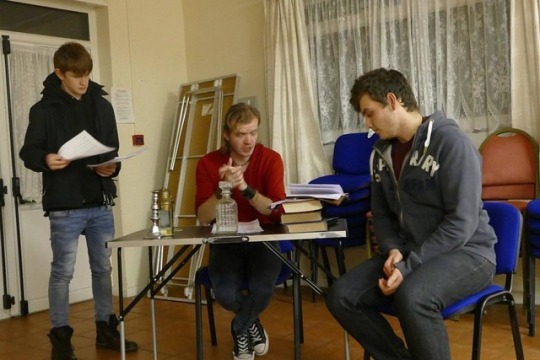
Rehearsals for scenes in Abberlines office, as art of our #jacktheripper theatre show (not costumed today). With Seamus as Reid, and Ed as #Abberline, interviewing Mason as suspect John Pizer. #rehearsal #actorslife #theatre #whitechapel #devon #theater #serialkiller #drama #actor #acting #brixham #uk #creative #stage #rehearsal #act #rehearsing #police #scotlandyard #script #picoftheday (at Brixham)
#script#rehearsing#drama#actorslife#scotlandyard#uk#picoftheday#devon#serialkiller#theater#brixham#jacktheripper#rehearsal#actor#act#police#whitechapel#theatre#creative#stage#abberline#acting
0 notes